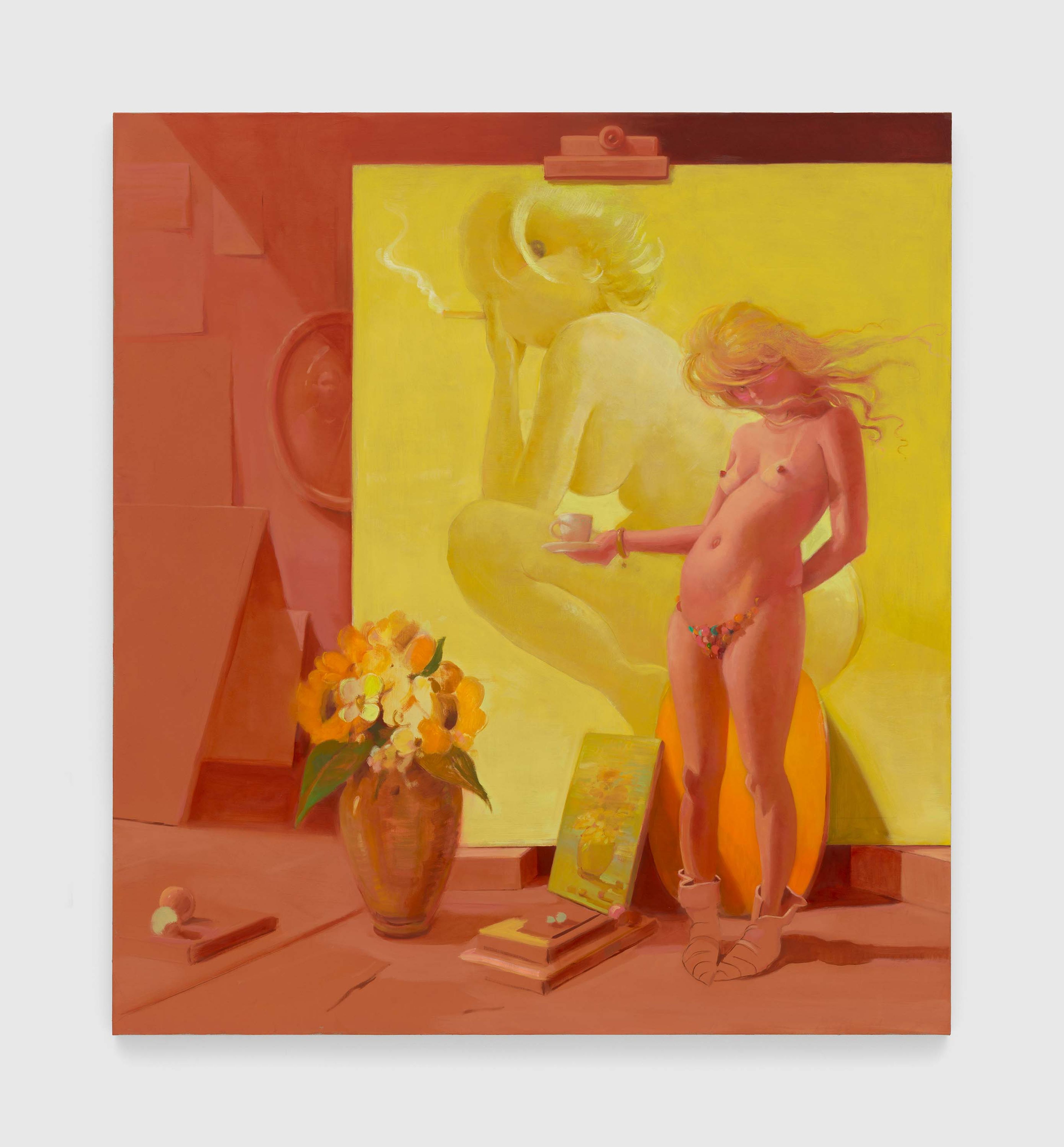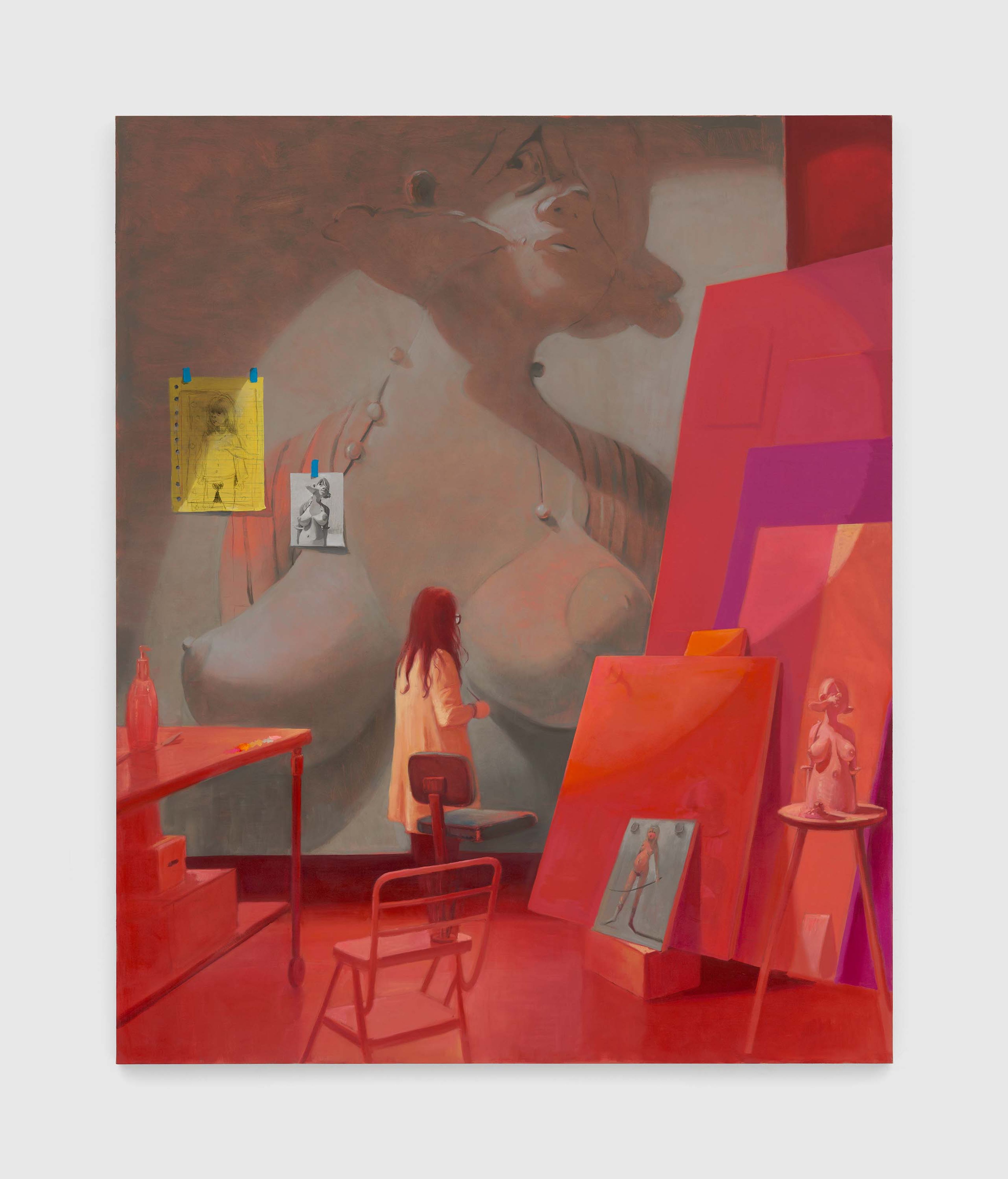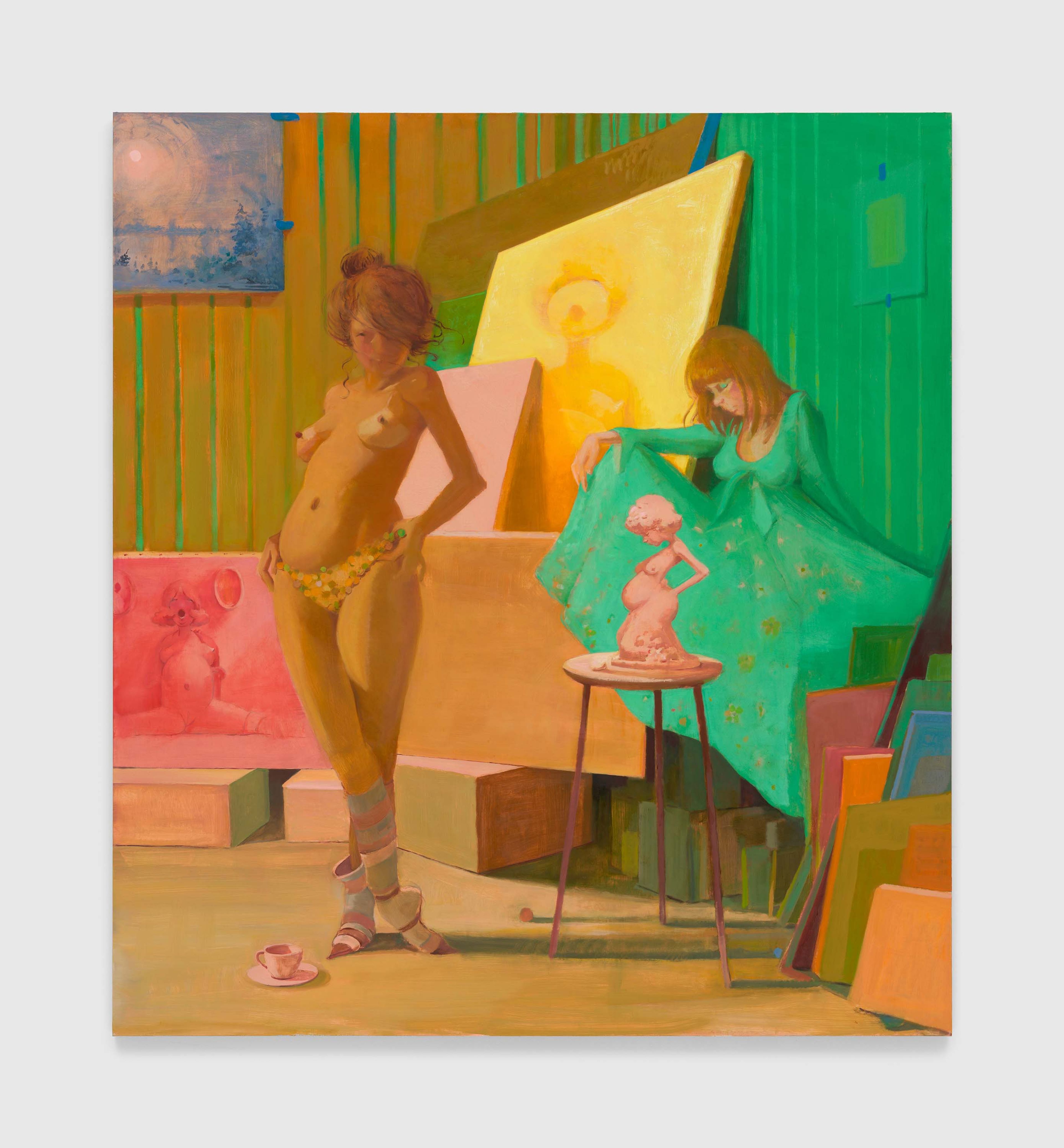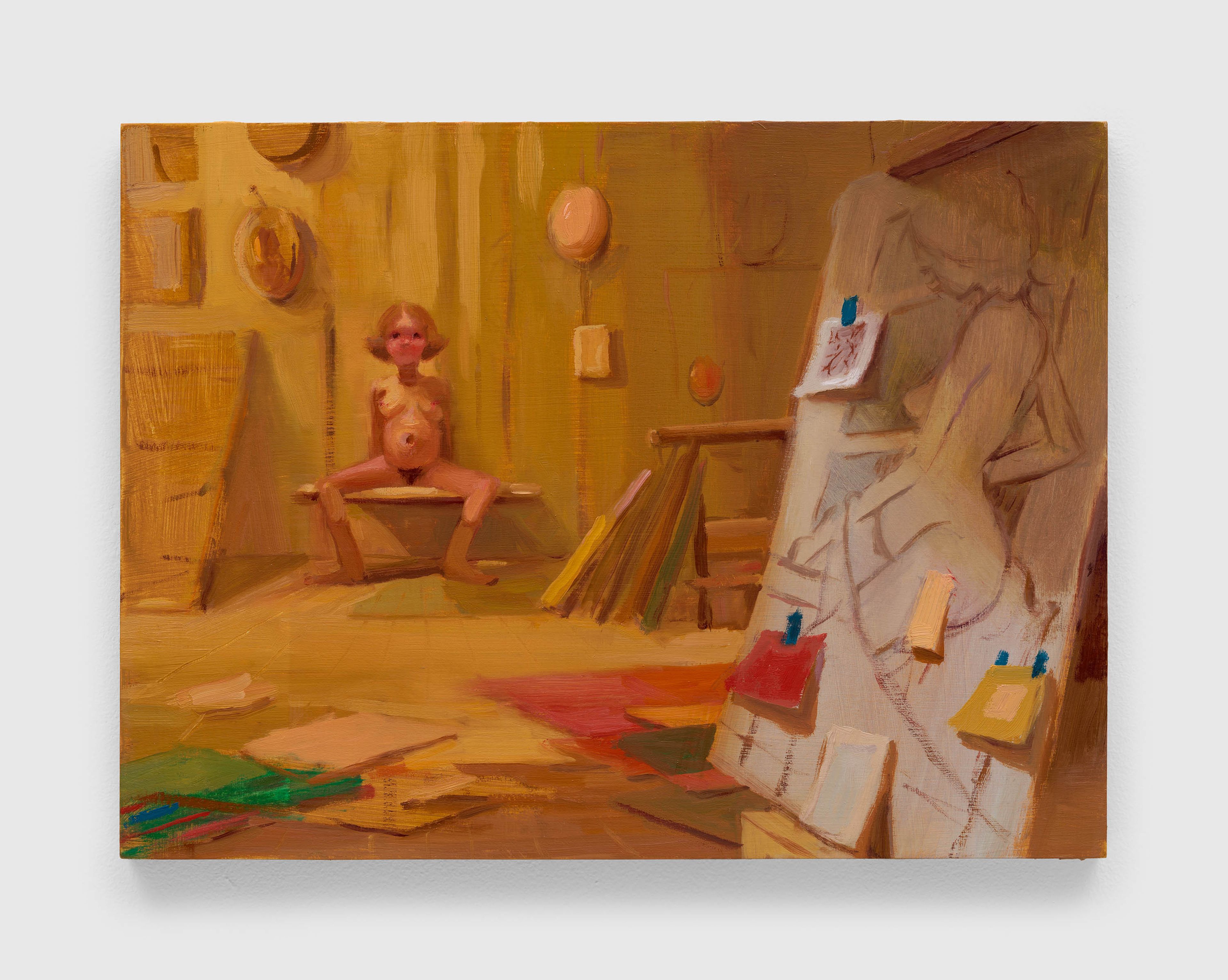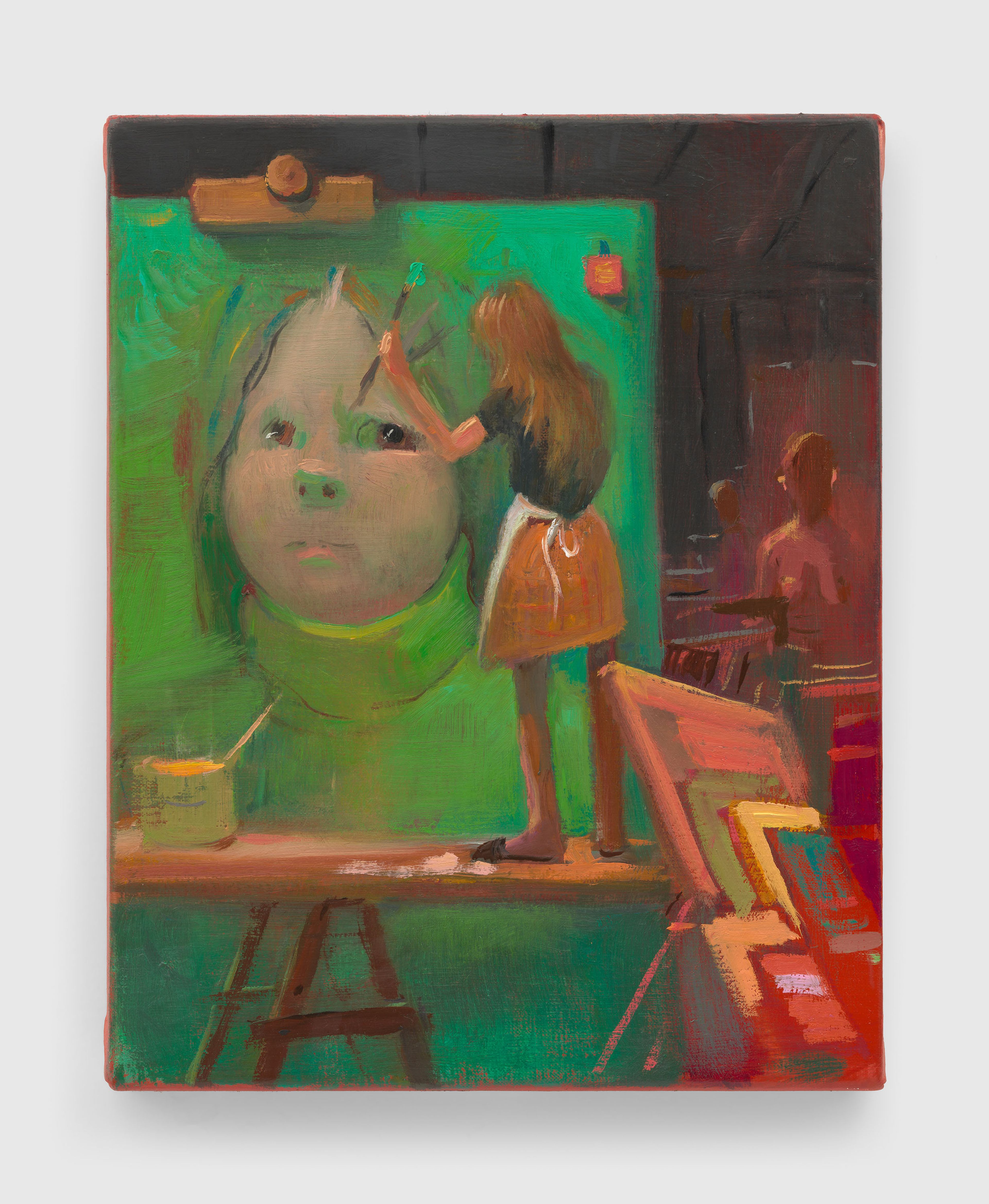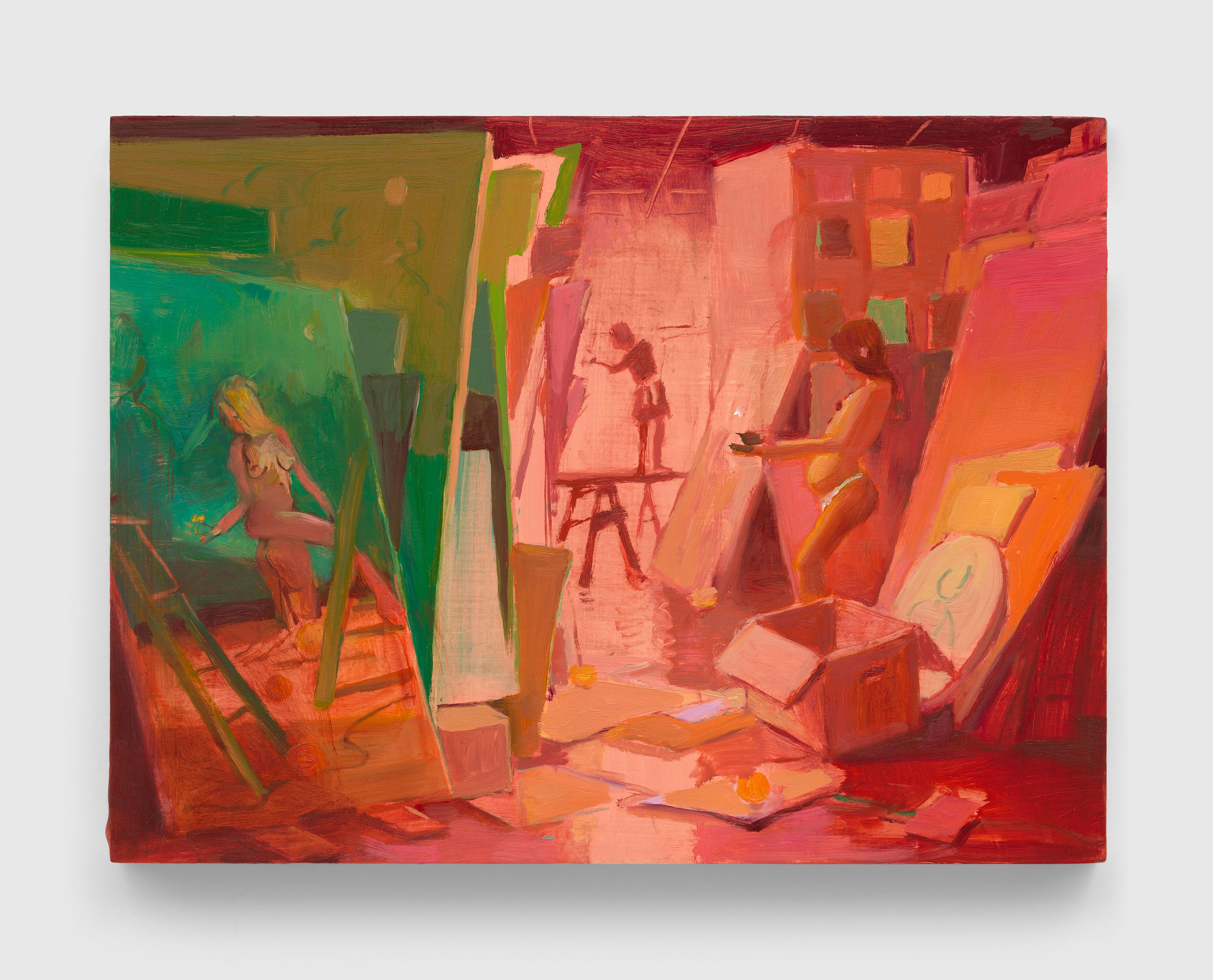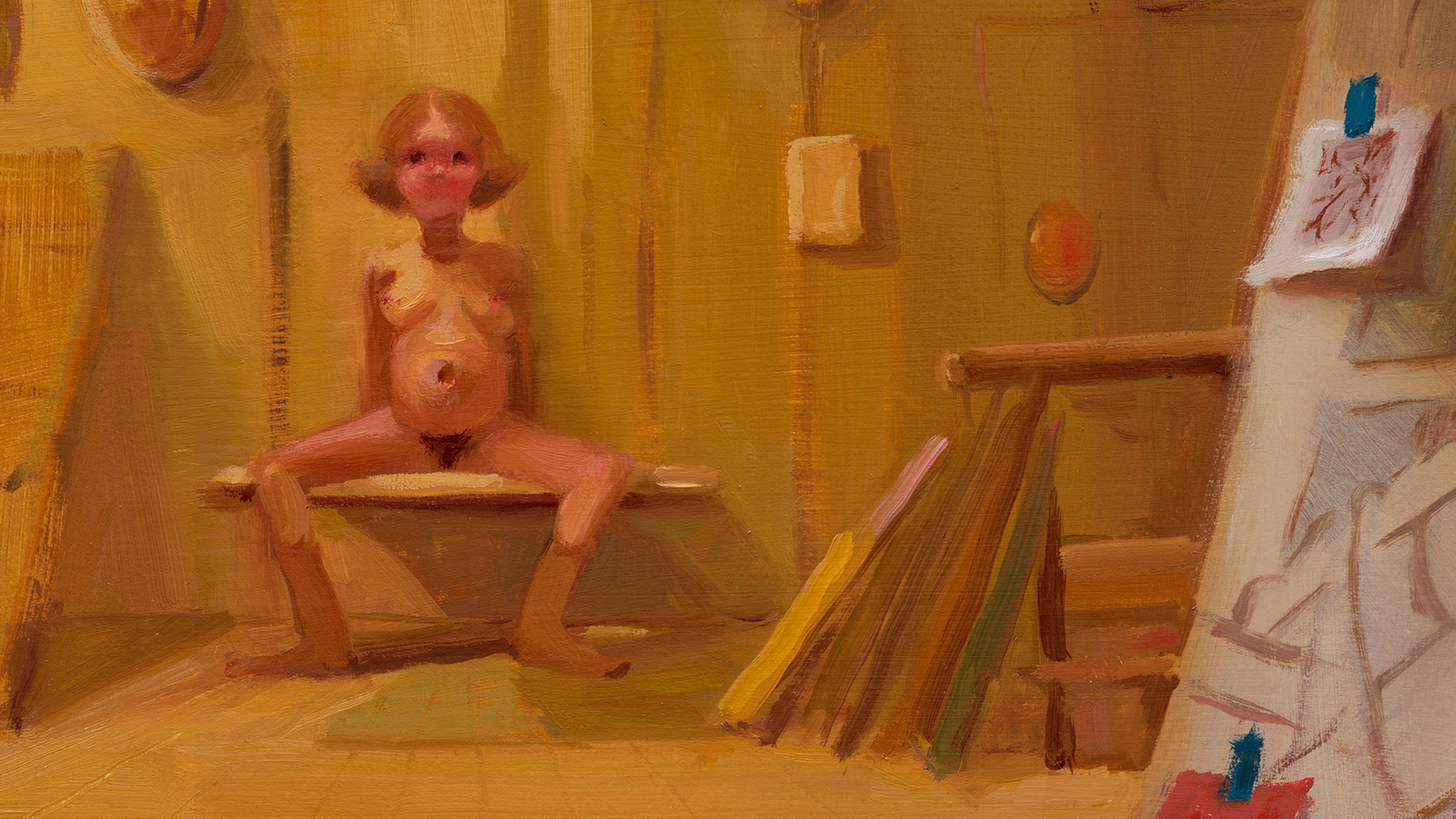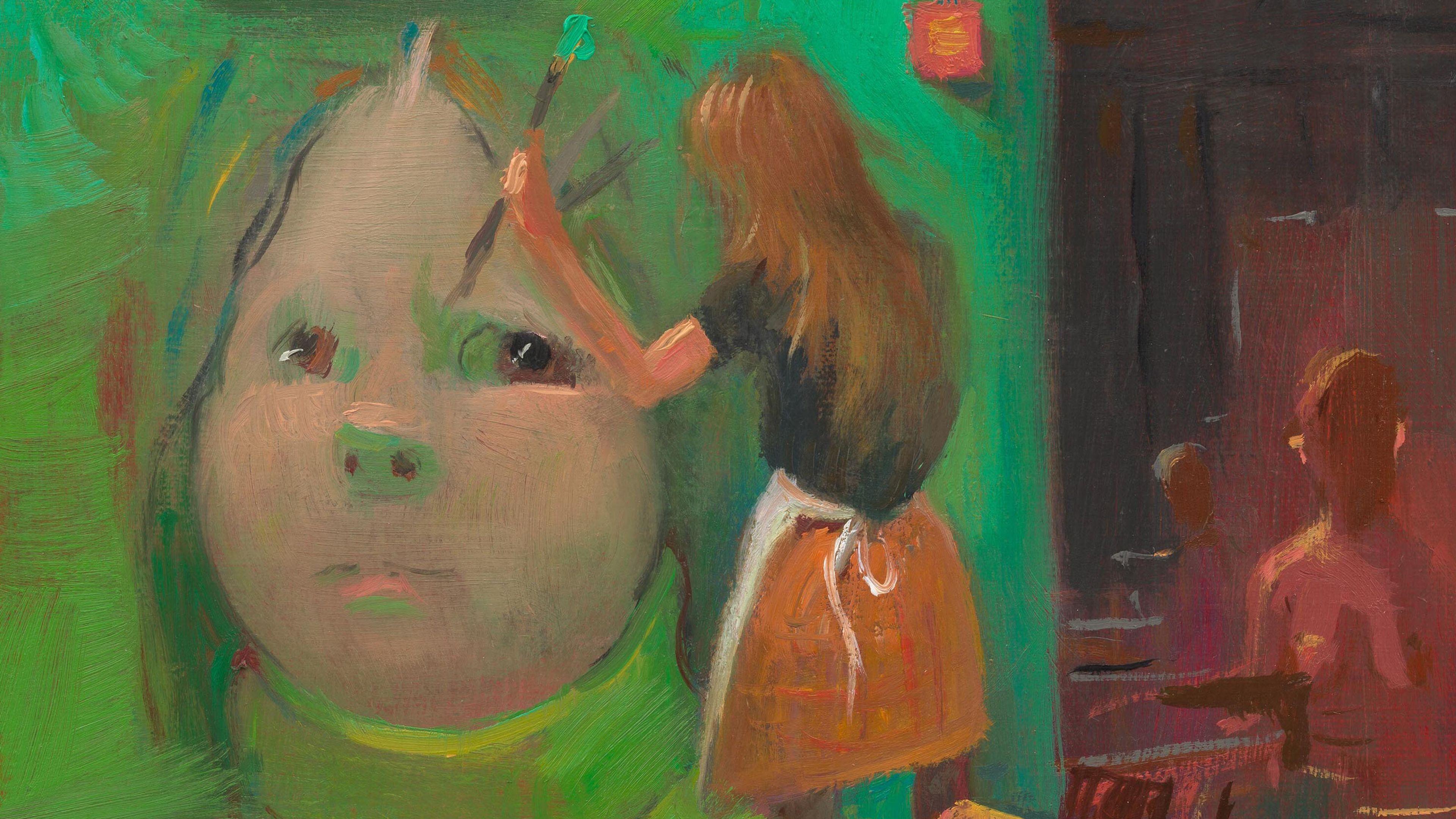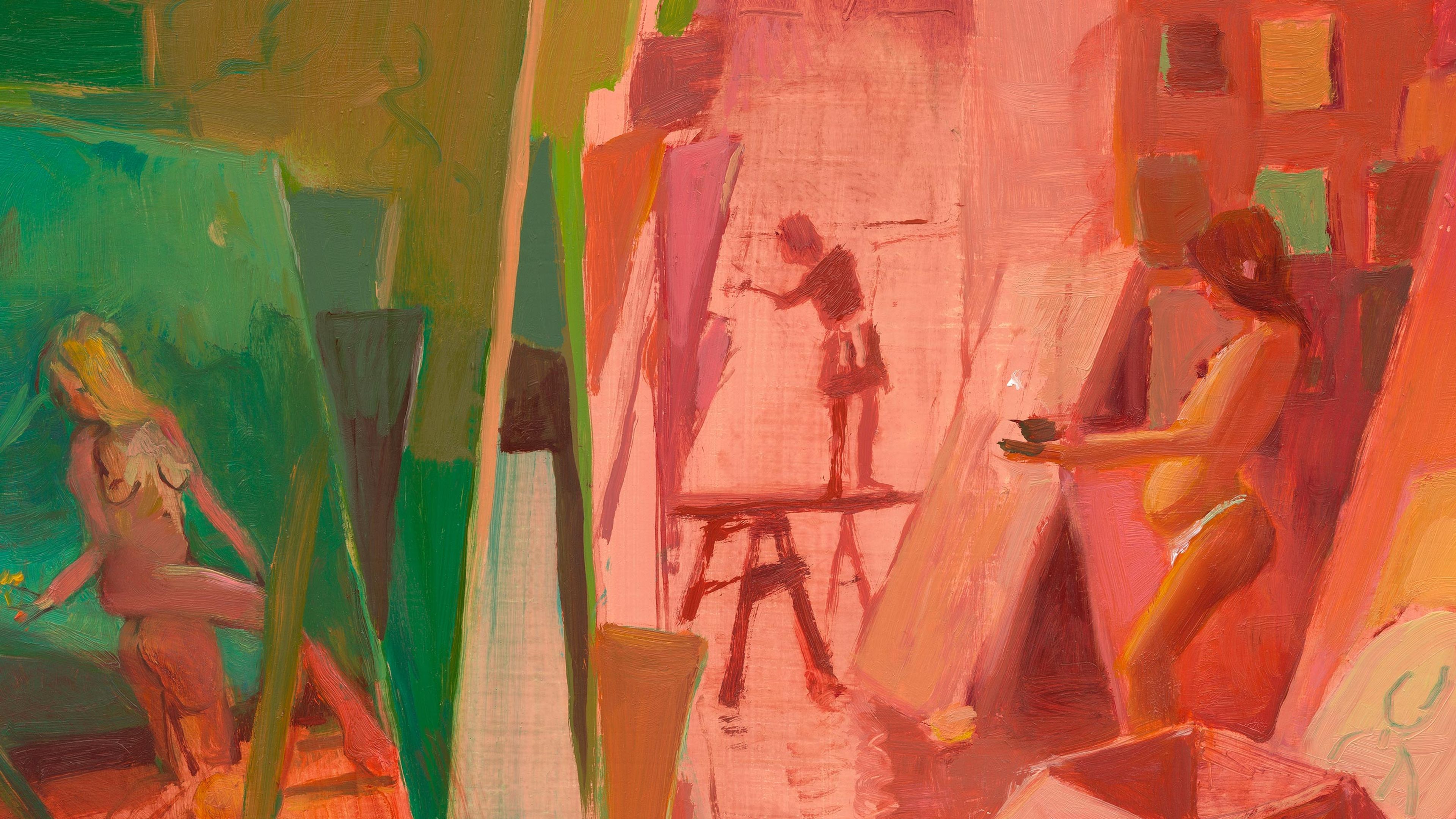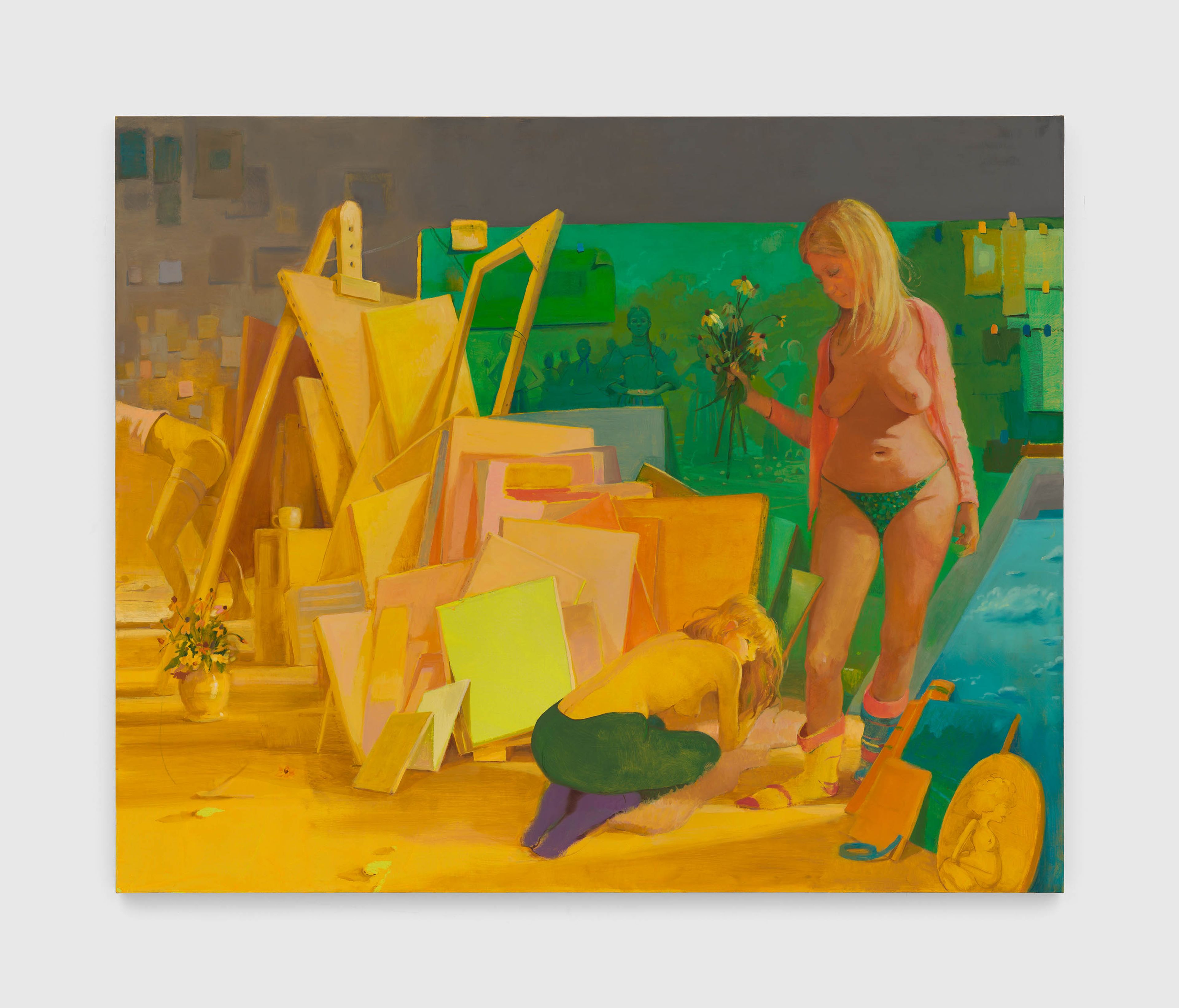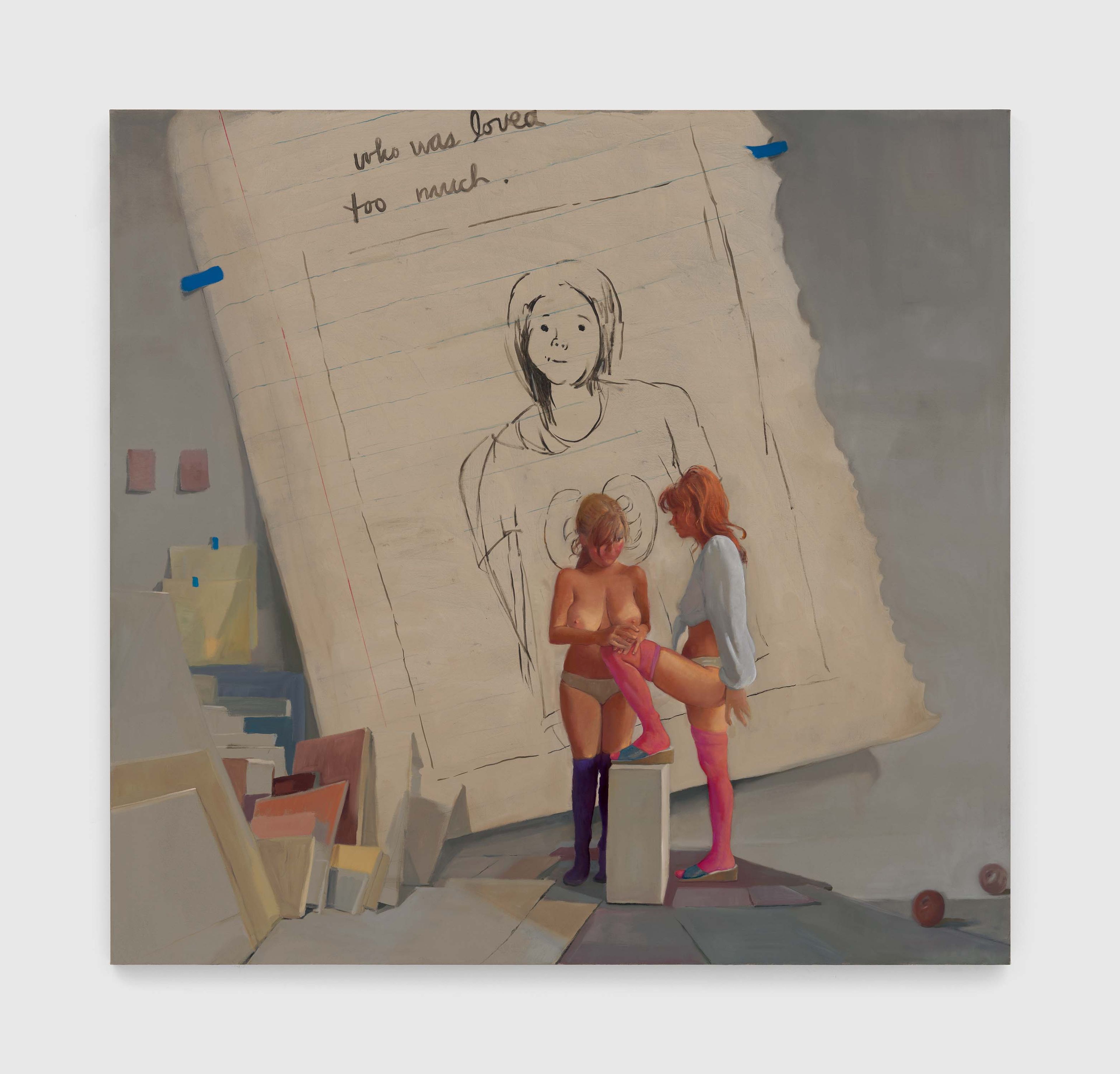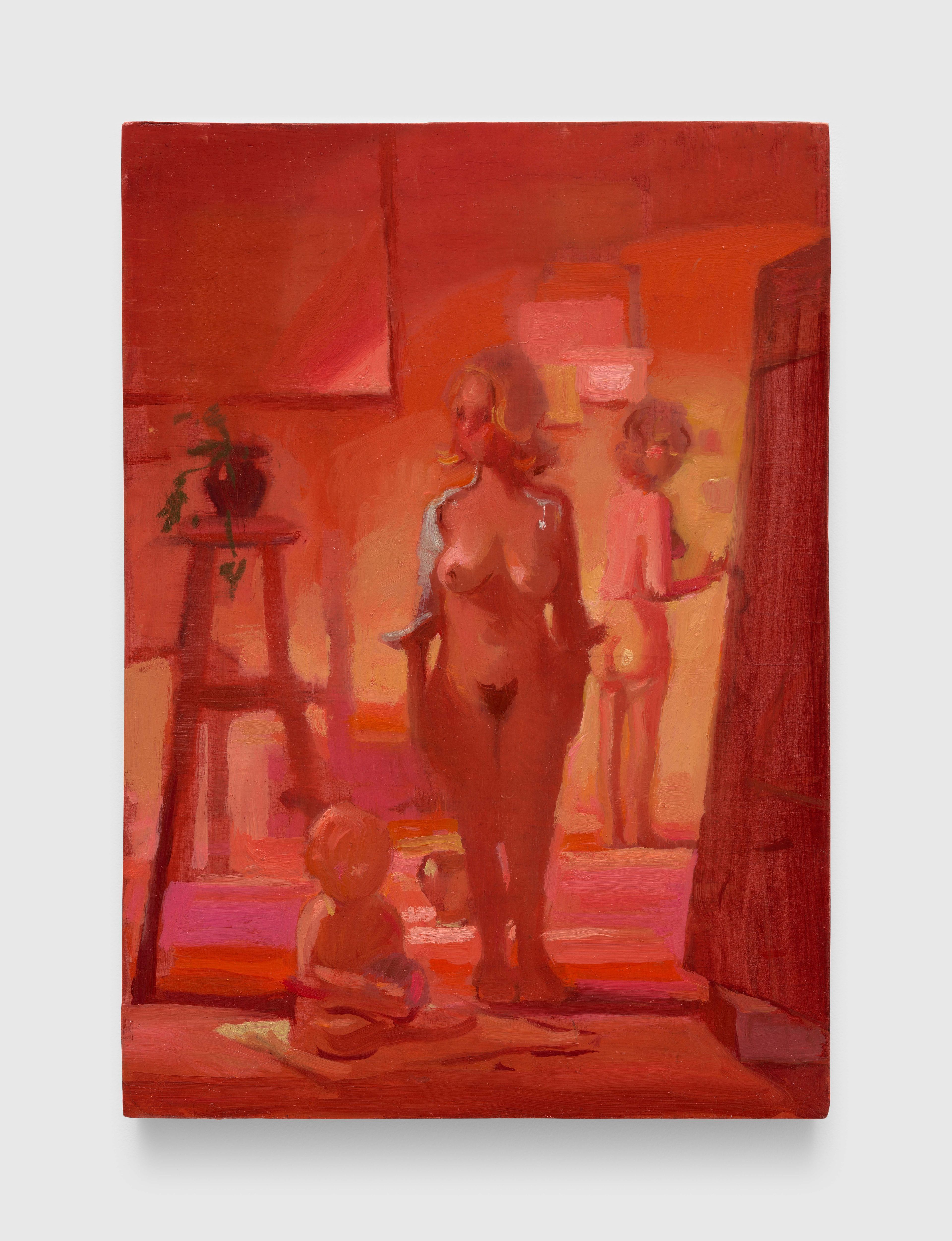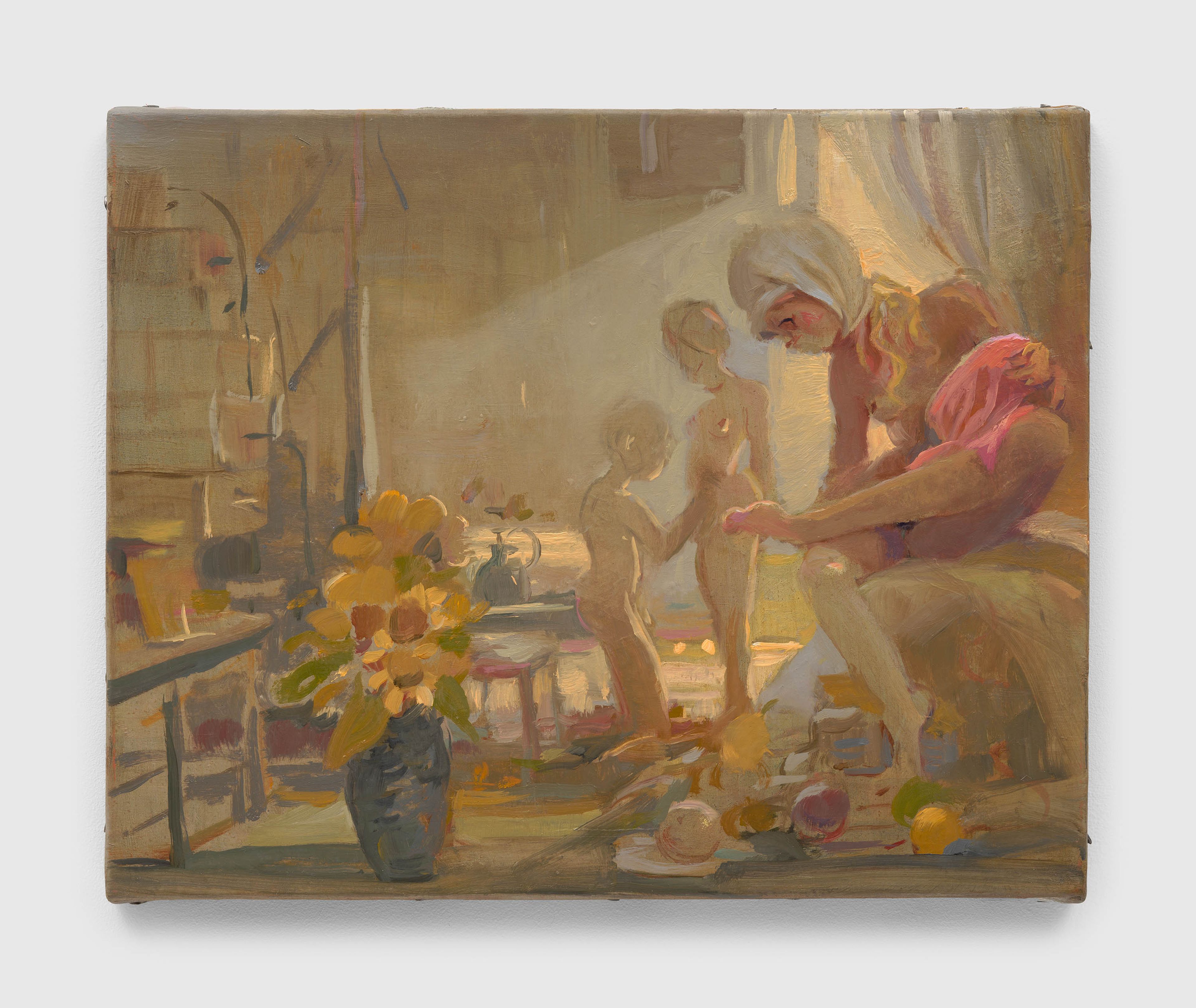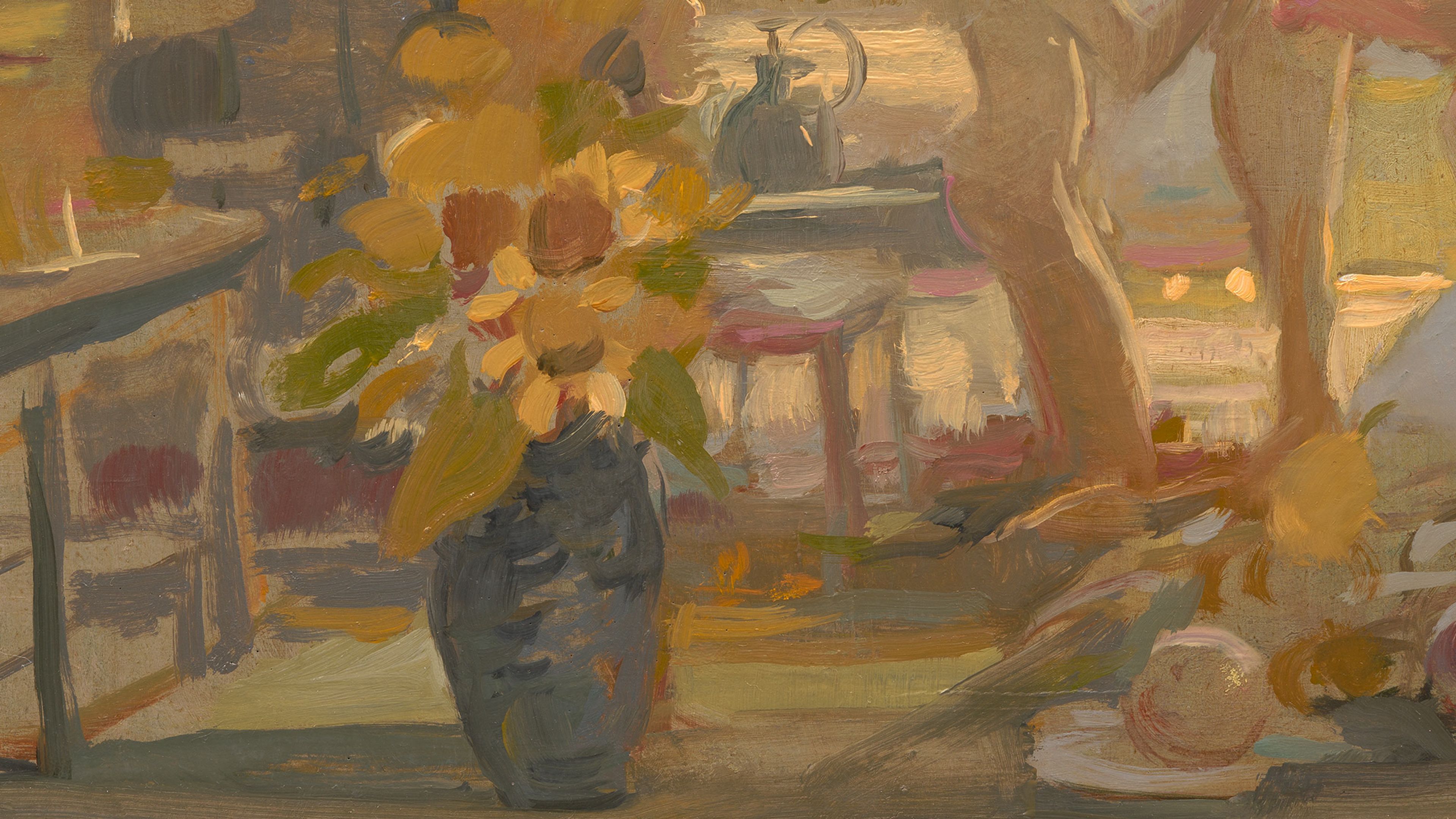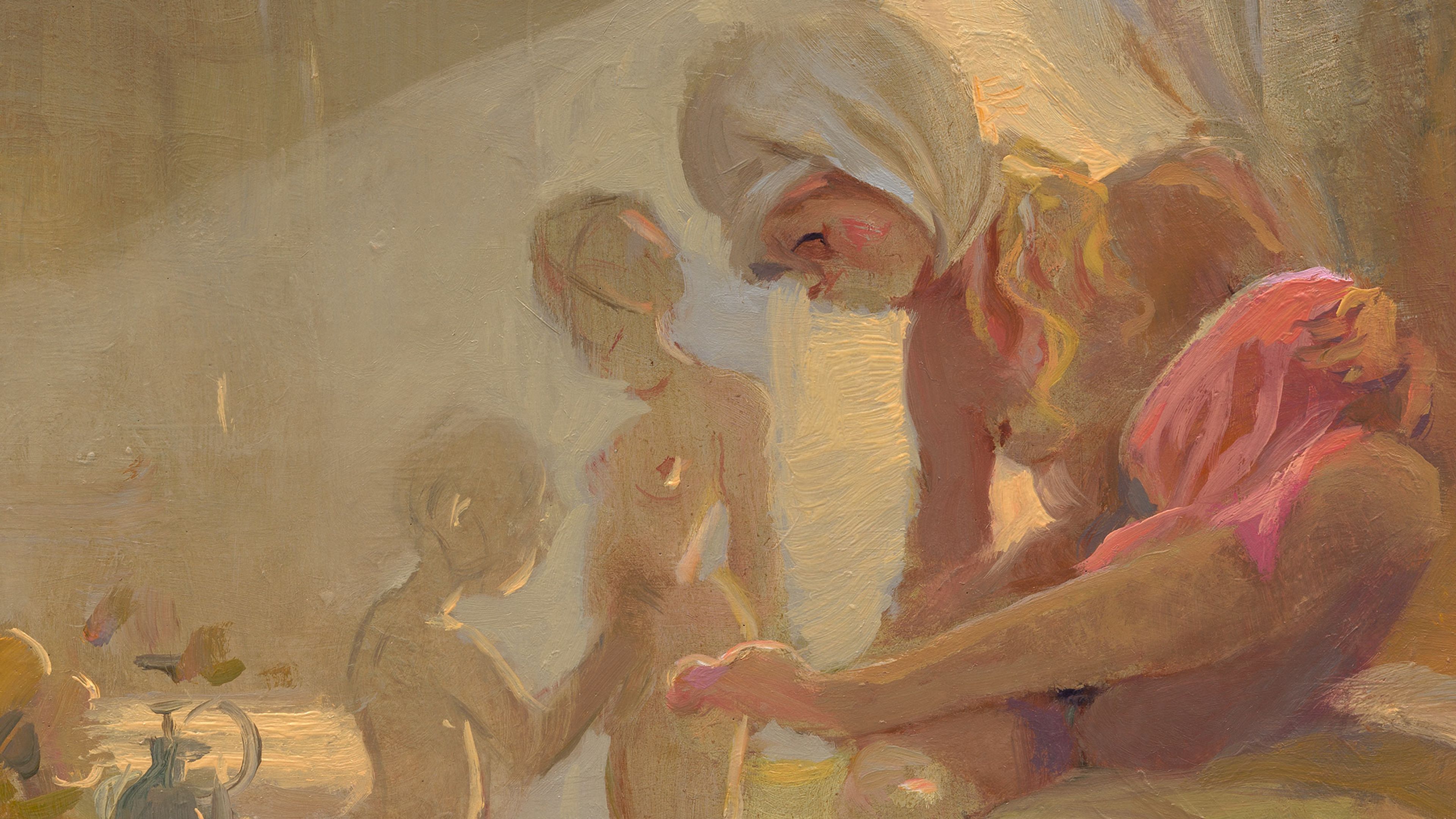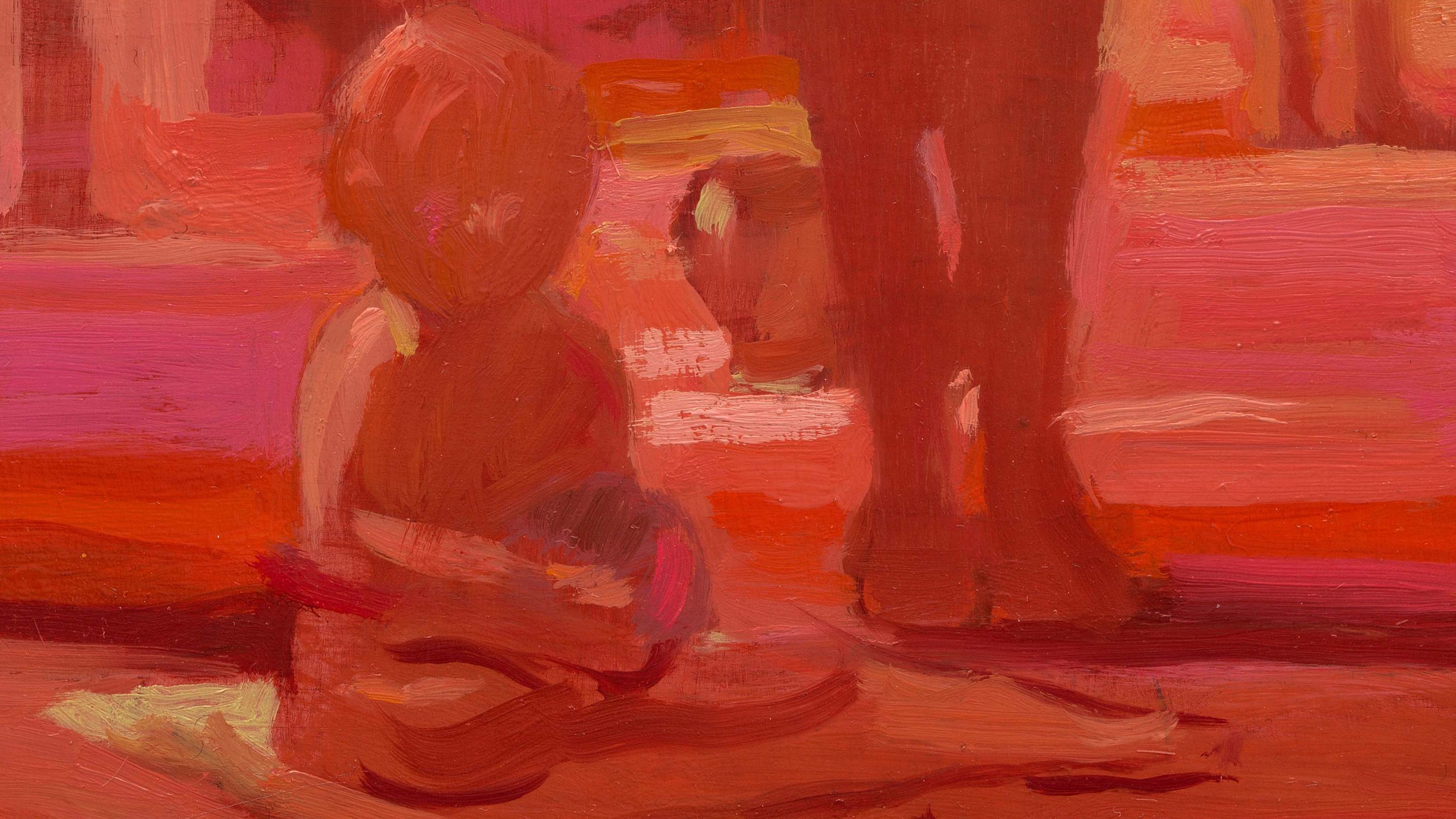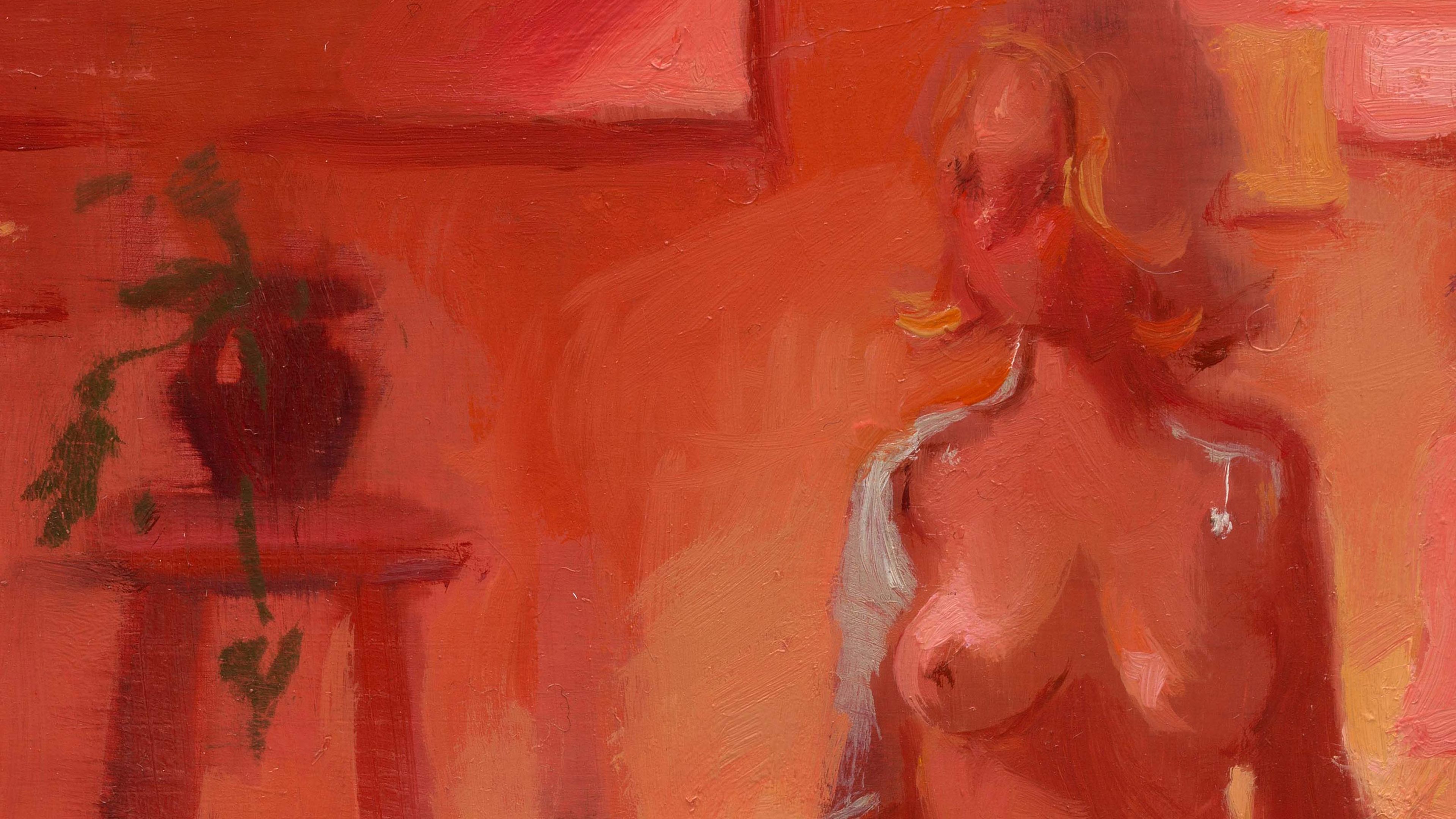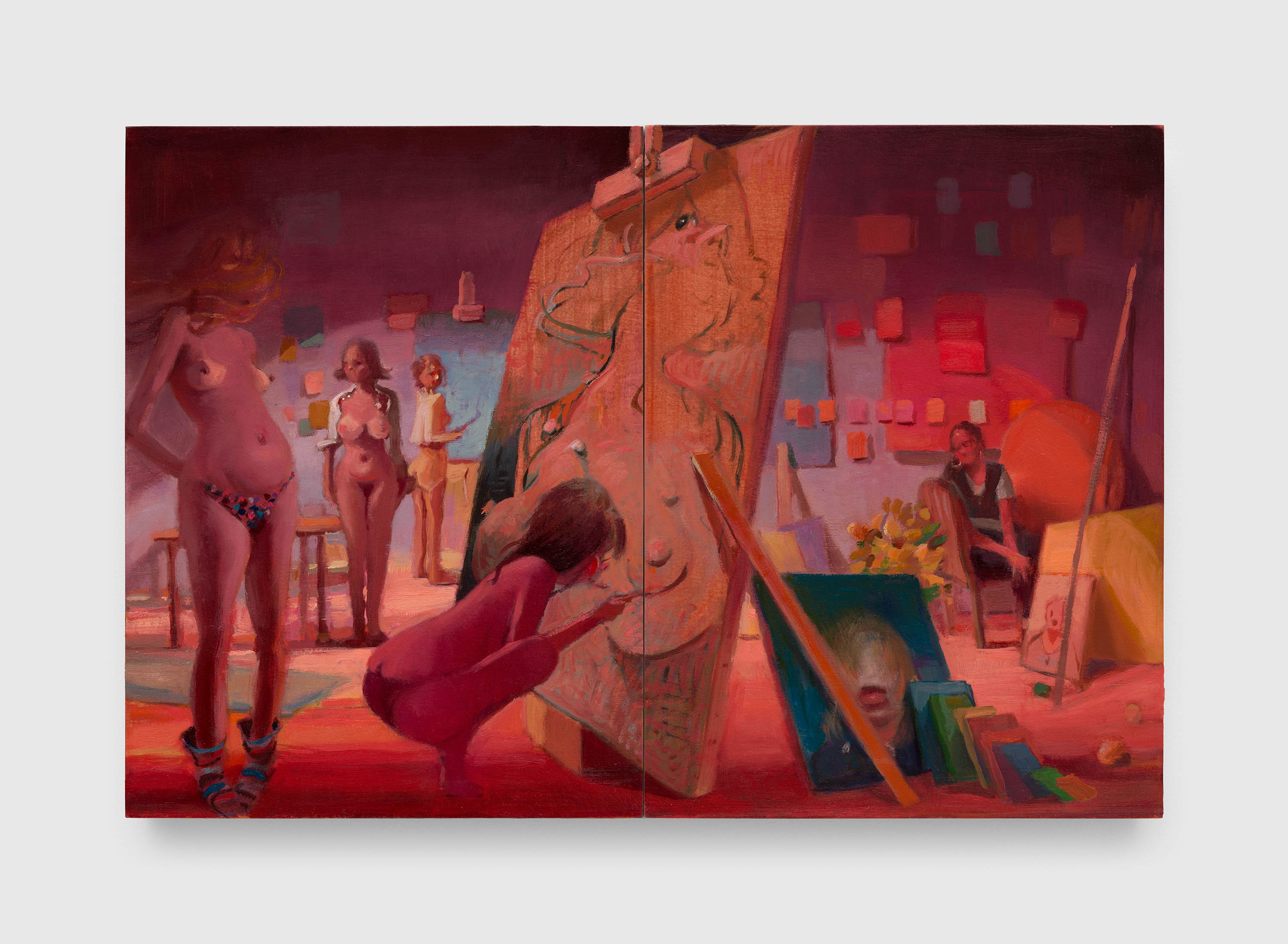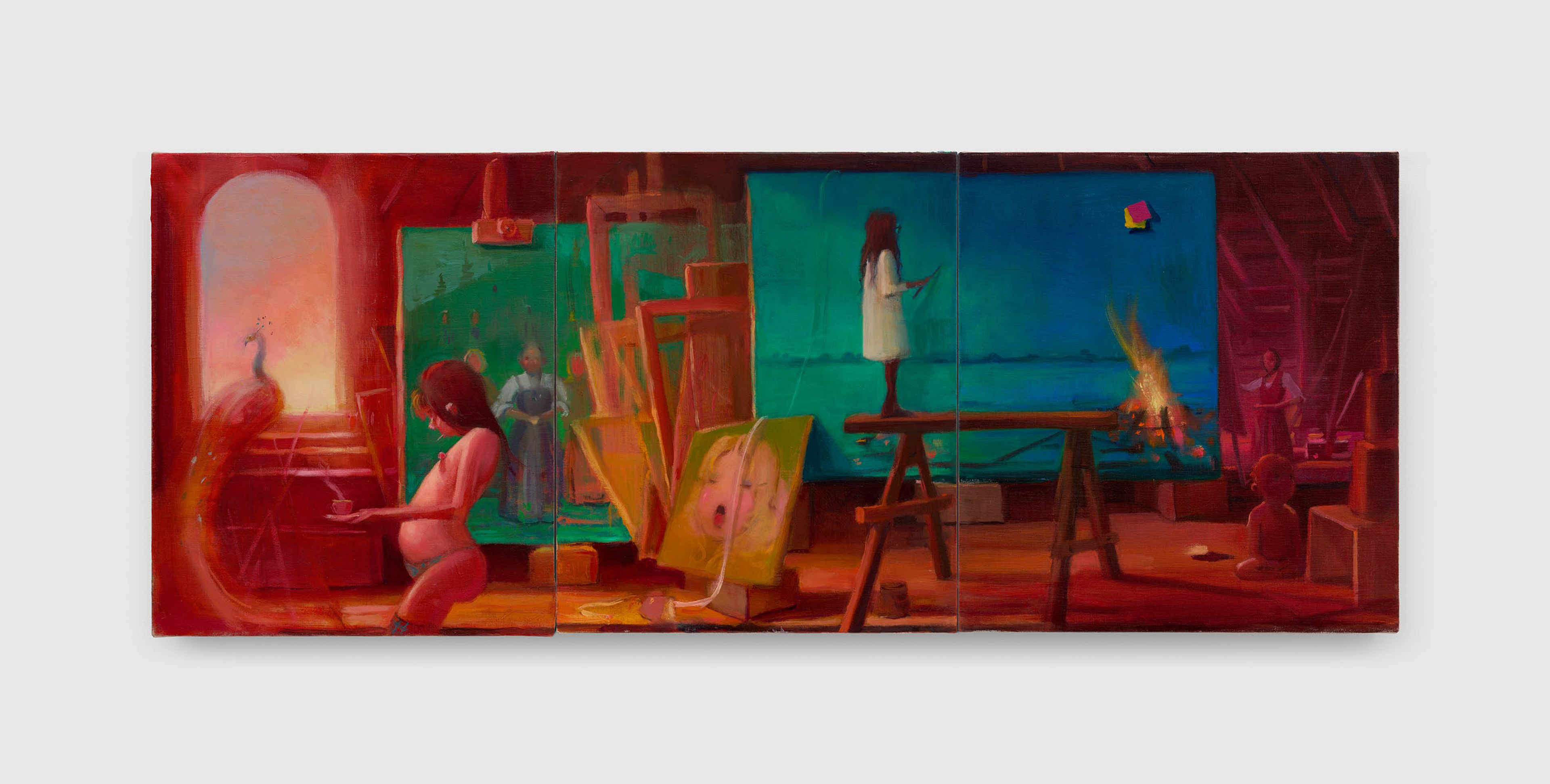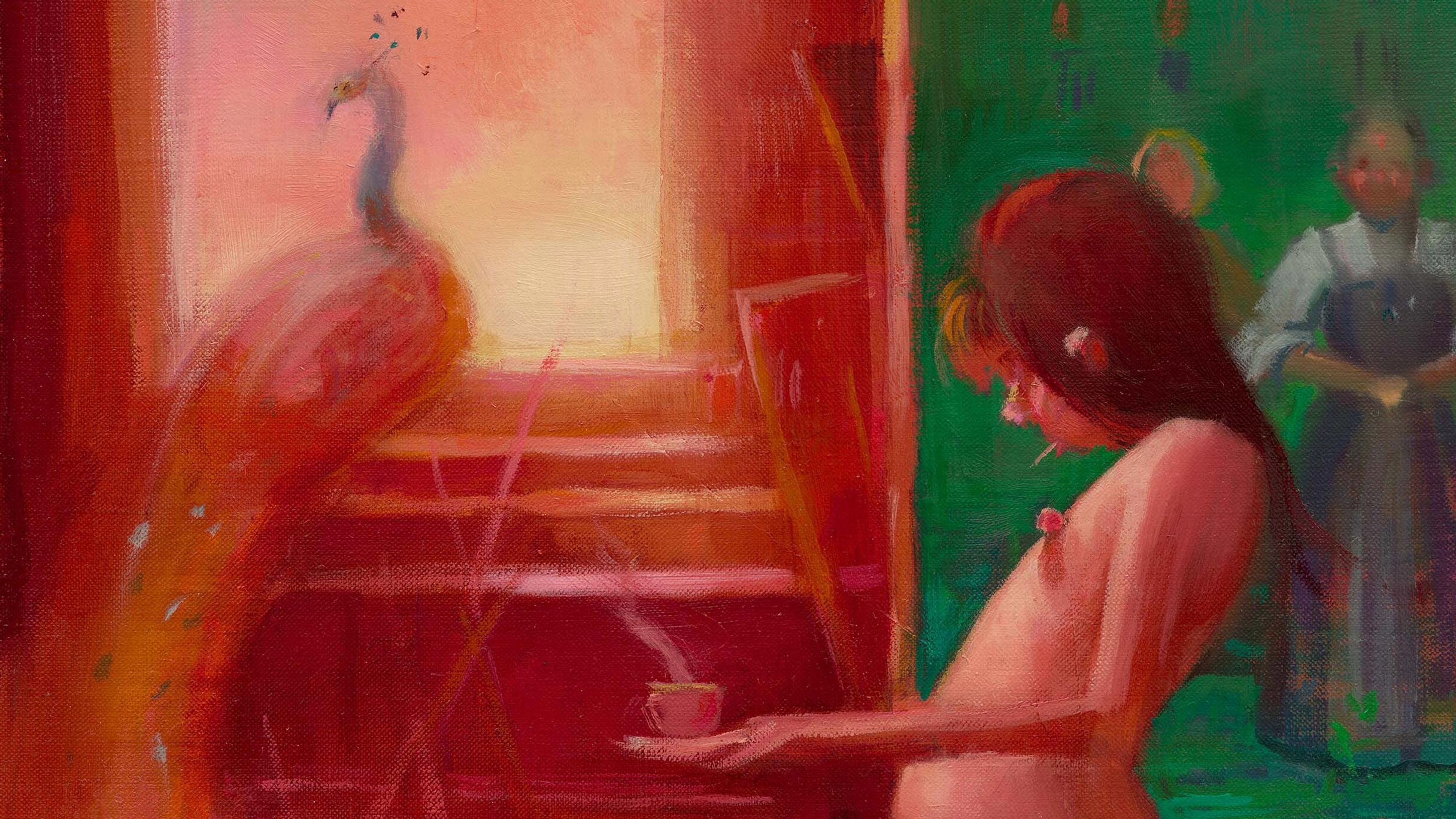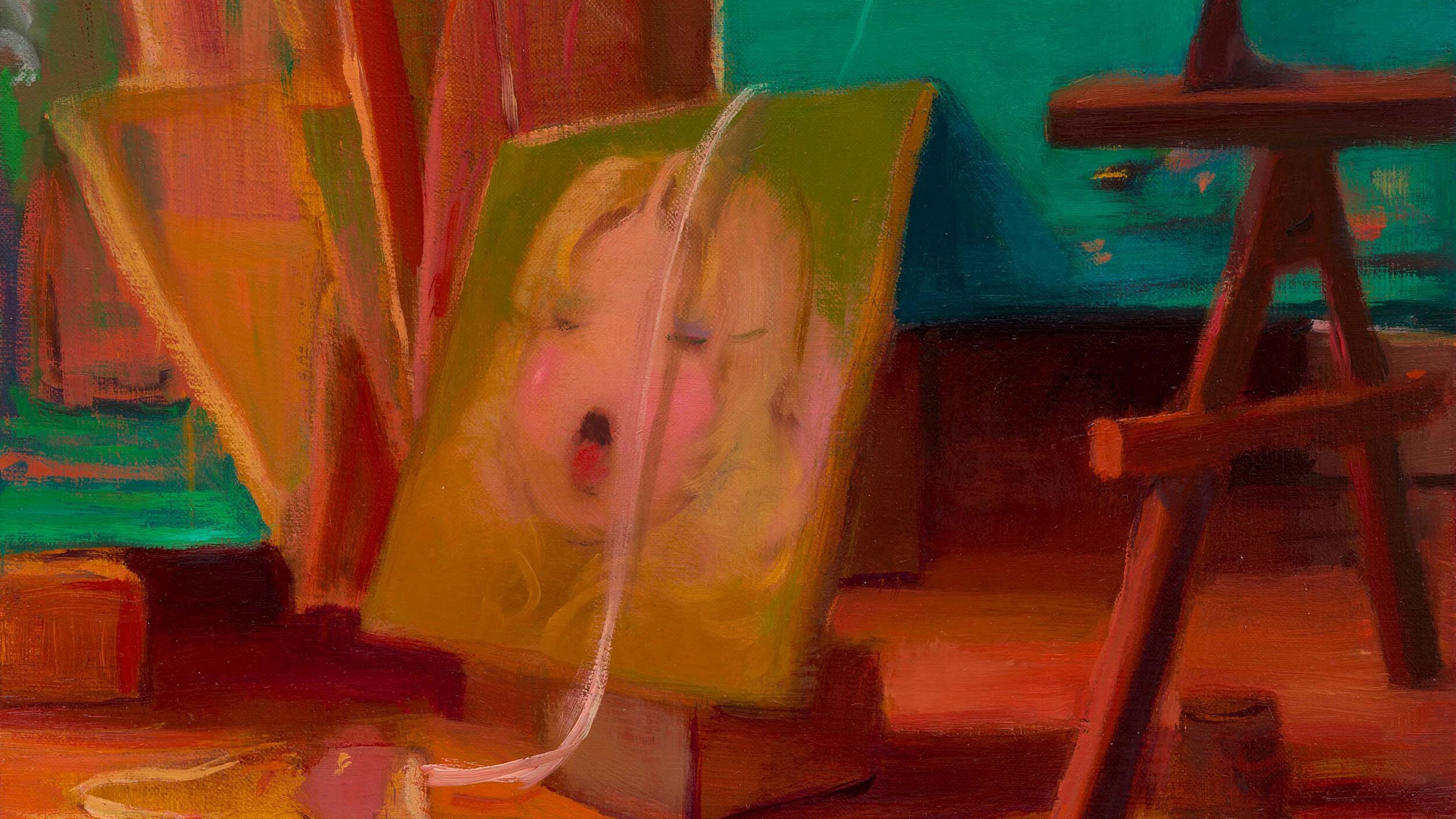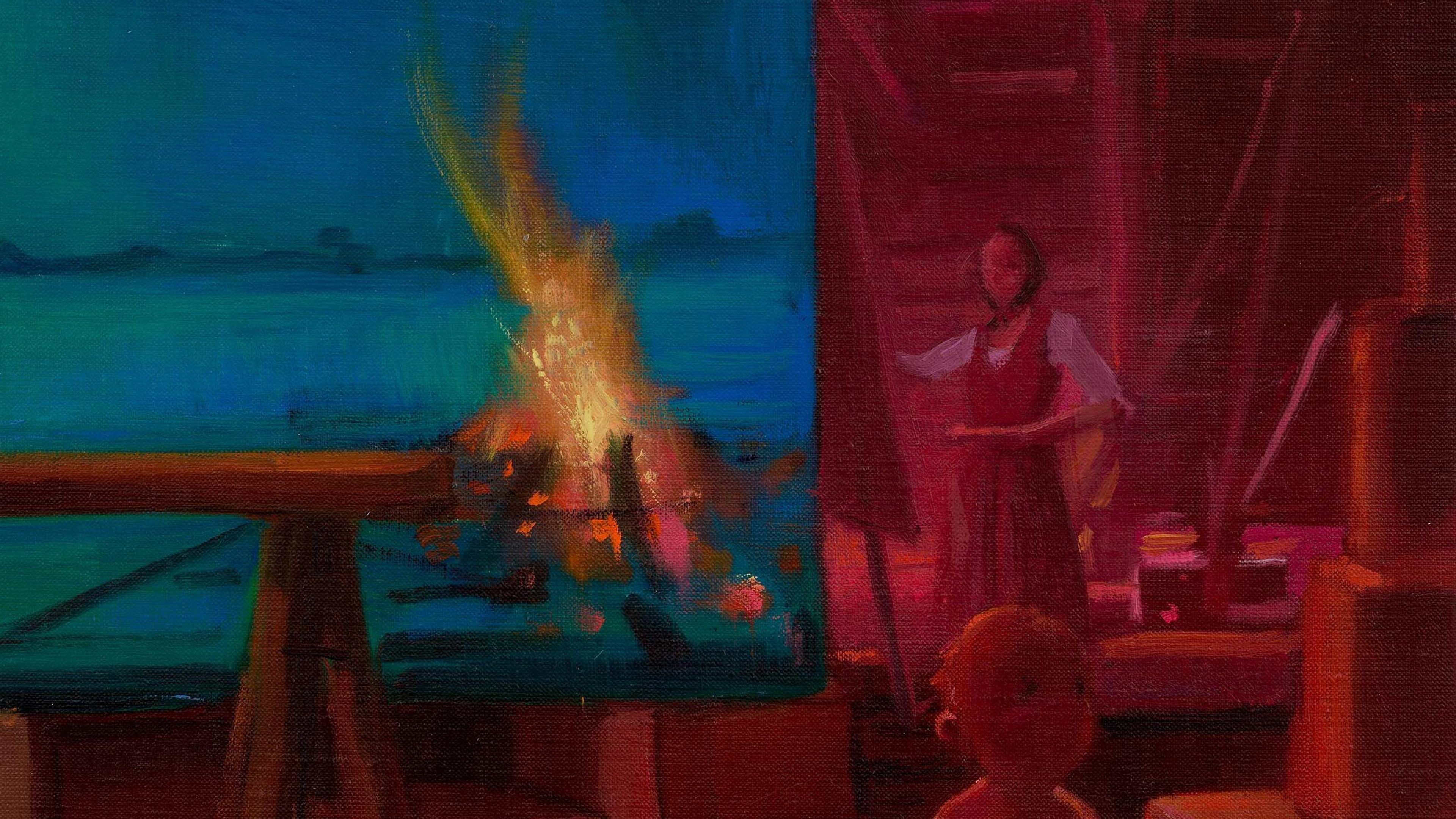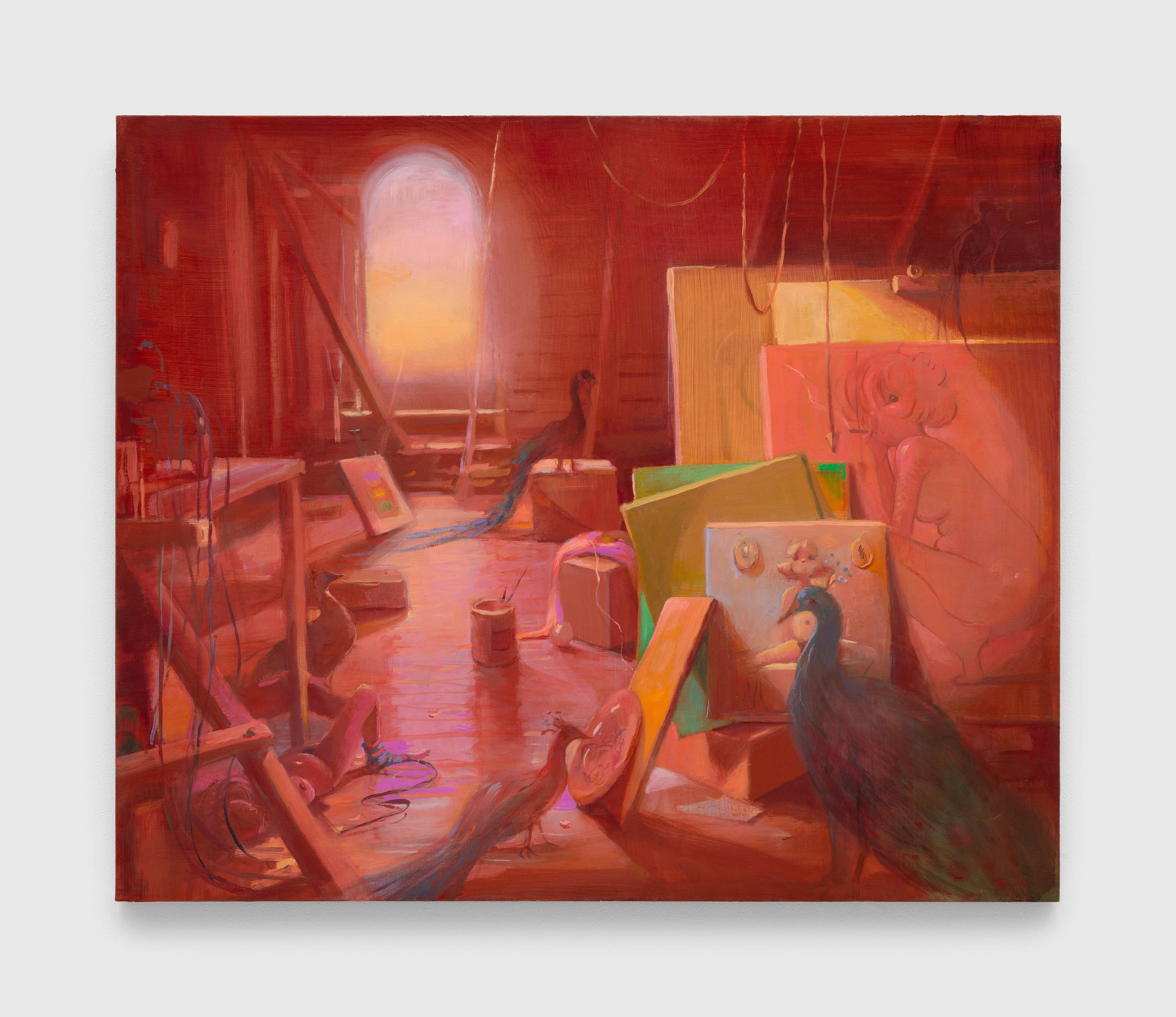Exhibition
Lisa Yuskavage
Want to know more?
Past
February 18—April 12, 2025
Opening Reception
Tuesday February 18, 6–8 PM
Location
Los Angeles
606 N Western Avenue
Los Angeles, CA 90004
Tue, Wed, Thu, Fri, Sat: 10 AM-6 PM
Artist
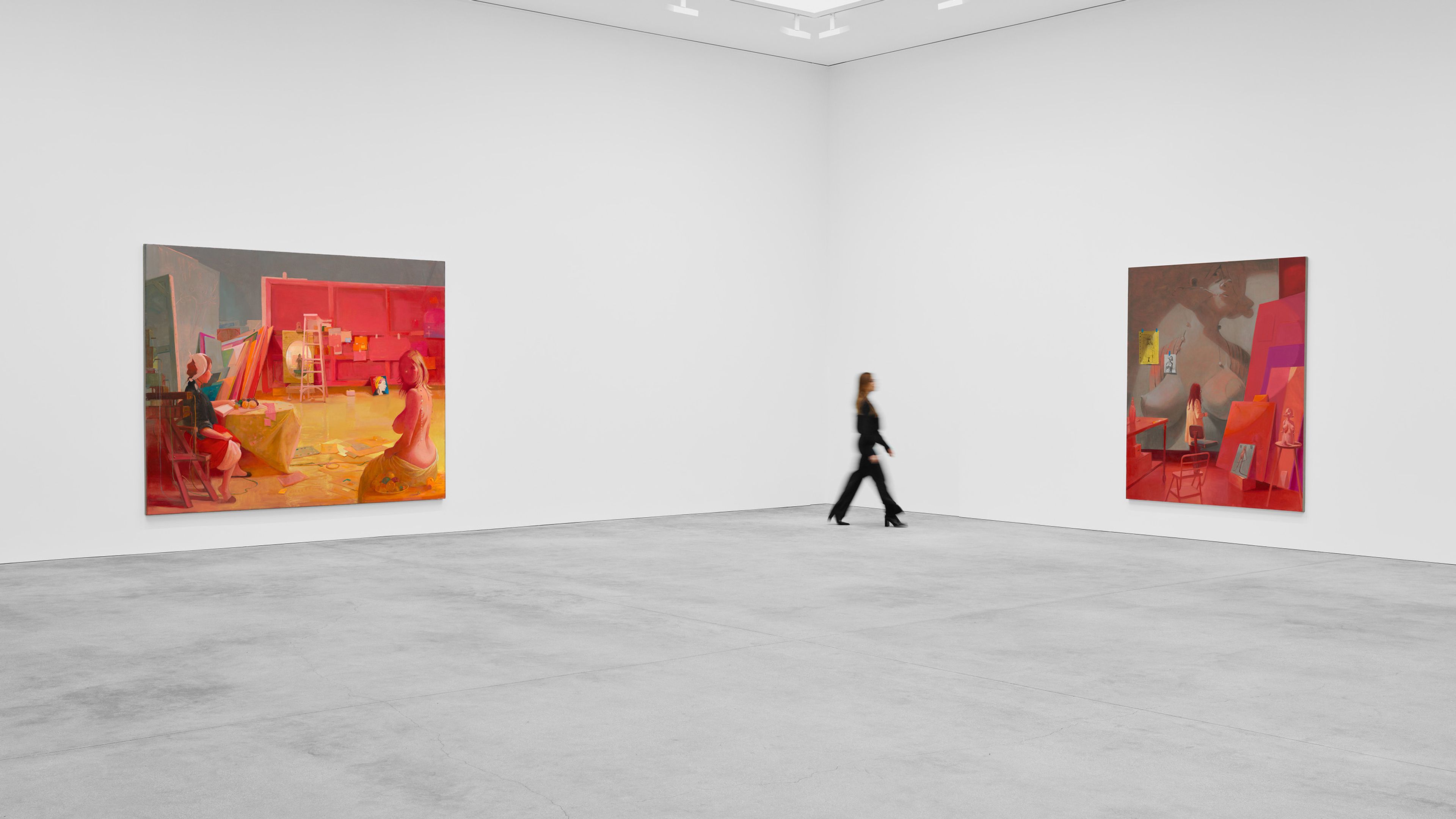
Installation view, Lisa Yuskavage, David Zwirner, Los Angeles, 2025
Explore
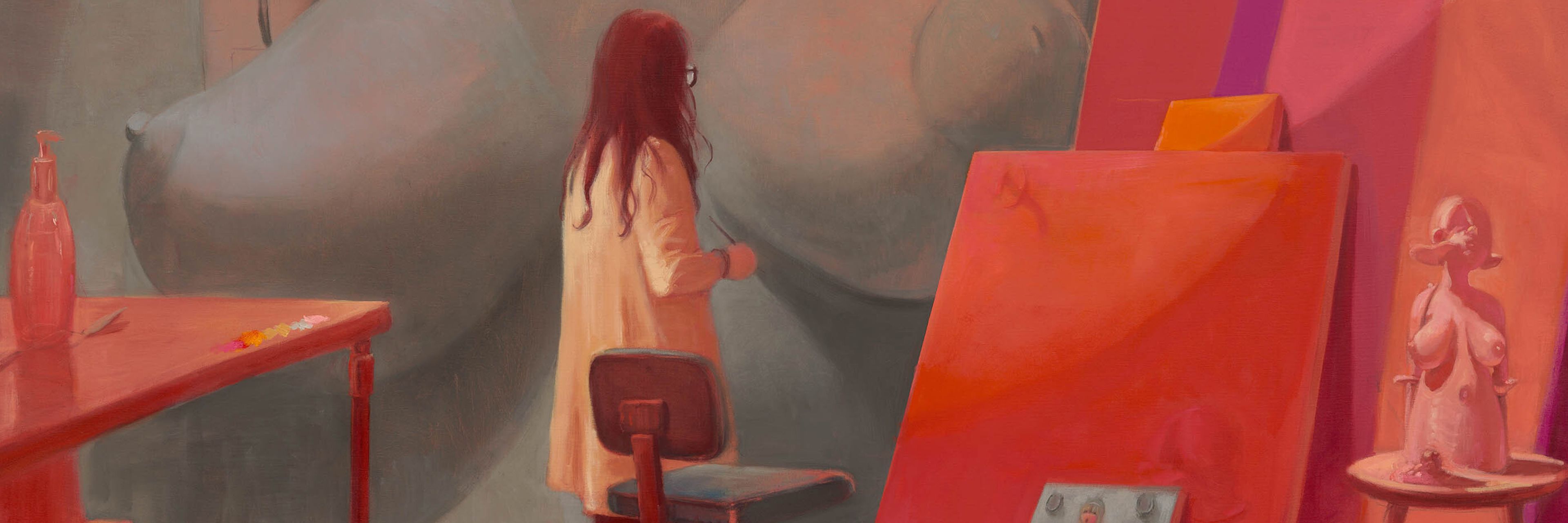
Exhibition Checklist: Lisa Yuskavage
“Yuskavage’s principal tool for the creation of meaning in her paintings is color. This commitment to color was established very early in her career and has accrued nuance and complexity over time.... The color is the subject’s aura and the subject’s aura is, in turn, the subject of the painting.”
—Christopher Bedford, director, San Francisco Museum of Modern Art

Lisa Yuskavage, Painter Painting, 2024 (detail)
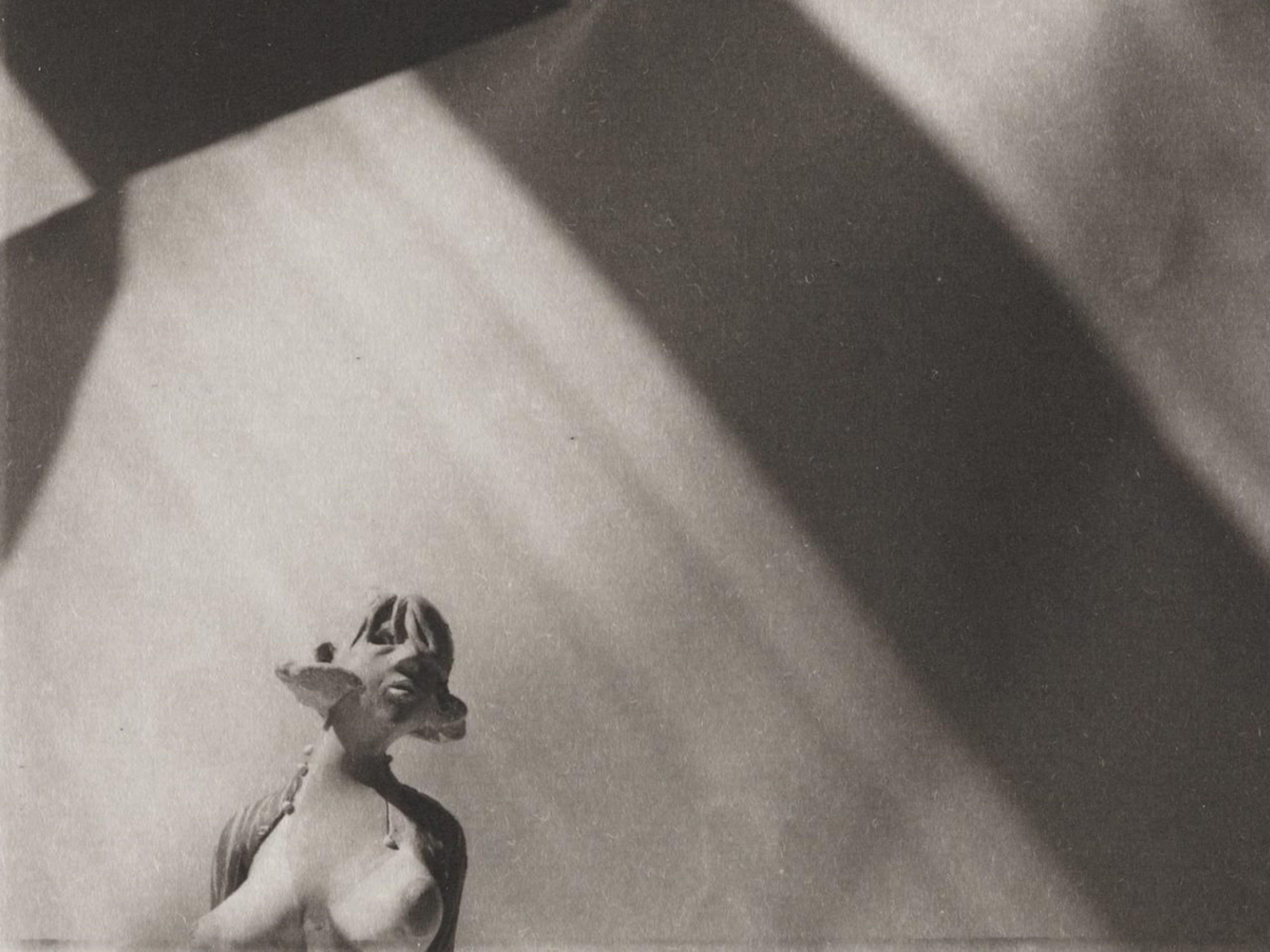
Lisa Yuskavage, Bad Habits Facing West 5, 1996

Lisa Yuskavage, Motherfucking Rock, 1996. Institute of Contemporary Art, Boston

Lisa Yuskavage, Faucet, 1995
Painter Painting (2024), one of the new large-scale works in the exhibition, envisions a monumental grisaille in front of which an artist—a self-portrait of Yuskavage in a lab coat—is at work. The painting within the scene is based on a black-and-white photograph that Yuskavage took in 1995 of one of her Bad Habits sculptural maquettes, “The Motherfucker.”
The sculptures have subsequently appeared as subjects in many of her works, most notably from 1996 to 1999. Expanding the self-referential play within this studio narrative, Yuskavage includes a mimetic version of the original photograph, which is shown taped to the surface of the oversized grayscale painting. The Bad Habits sculpture itself is visible on a pedestal on the right side of the composition.

Lisa Yuskavage, Painter Painting, 2024 (detail)
“What has remained constant in her career is an extraordinary way with color, a penchant for scenarios that defy interpretation, and a fascination with rendering a particular kind of naked lady.... What Yuskavage ultimately seeks to provoke ... is empathy: for the figure, for the painter, for the victimizer and the victimized, the low and the high, the self who is staring, lost, at the conflagration of color.”
—Ariel Levy in “Lisa Yuskavage’s Bodies of Work,” The New Yorker, 2023
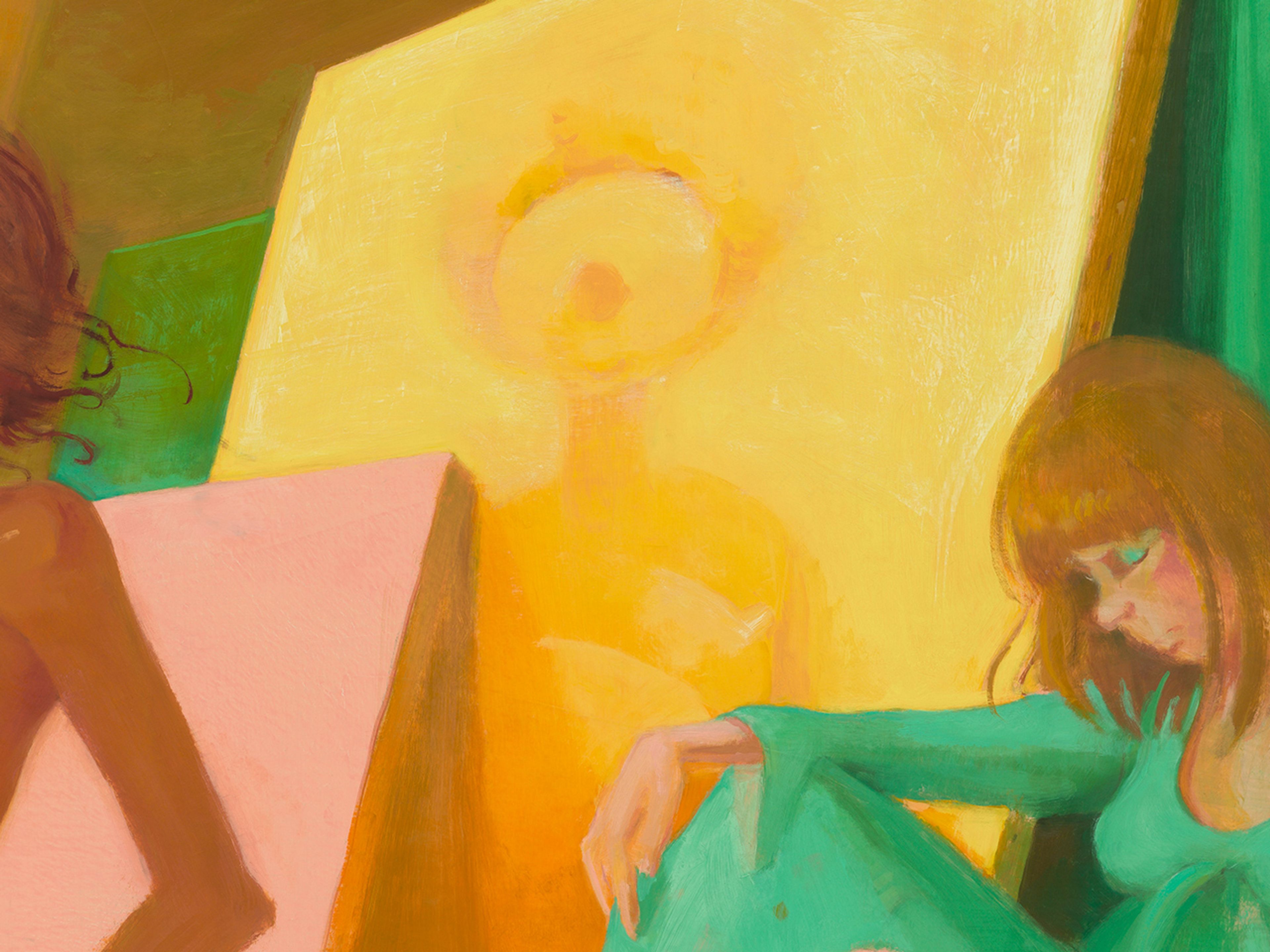
Lisa Yuskavage, In the Company of Models, 2024 (detail)

Installation view, Lisa Yuskavage’s Transference Portrait of My Shrink in Her Starched Nightgown with My Face and Her Hair (1995) and Rorschach Blot (1995), on view in Lisa Yuskavage: The Brood, Rose Art Museum, Waltham, Massachusetts, 2015

Lisa Yuskavage and artist Keith Edmier in her studio with the Bad Habits maquettes, 1996. Photographer unknown, courtesy the artist
In the Company of Models (2024) includes a depiction of Yuskavage’s seminal 1995 painting Rorschach Blot, which can be seen leaning against the wall at an angle amid other works in progress. Yuskavage contrasts the lemony-yellow surface of that work with a wall painted in minty greens from which materializes a figure, who is based on an image of her at nineteen years old as a model in art school.
This figure’s dress, painted in similar luminous greens, is reminiscent of the starched nightgown worn by the subject in Transference Portrait of My Shrink in Her Starched Nightgown with My Face and Her Hair (1995), the pendant painting to Rorschach Blot. These paired works were first exhibited together at Yuskavage’s 1996 solo exhibition at Christopher Grimes Gallery in Santa Monica—a nod to the artist’s history in Los Angeles. Another imagined version of one of Yuskavage’s Bad Habits sculptures is shown here in profile to the right of another of the artist’s notable figurative motifs, a female nude in beaded panties.

Lisa Yuskavage, In the Company of Models, 2024 (detail)
“I can’t help but look at the girls—can’t stop myself, any more than they can stop their free-fall into wilder mutations. In this, they reflect back the most disorienting image of self, one fundamental to the act of seeing—not as an intact spectator, but with an unnerving passivity, the very embodiment of visual contemplation.”
—Faye Hirsch, art historian and critic, in her catalogue essay for Yuskavage’s 1996 solo exhibition at Christopher Grimes Gallery, Santa Monica
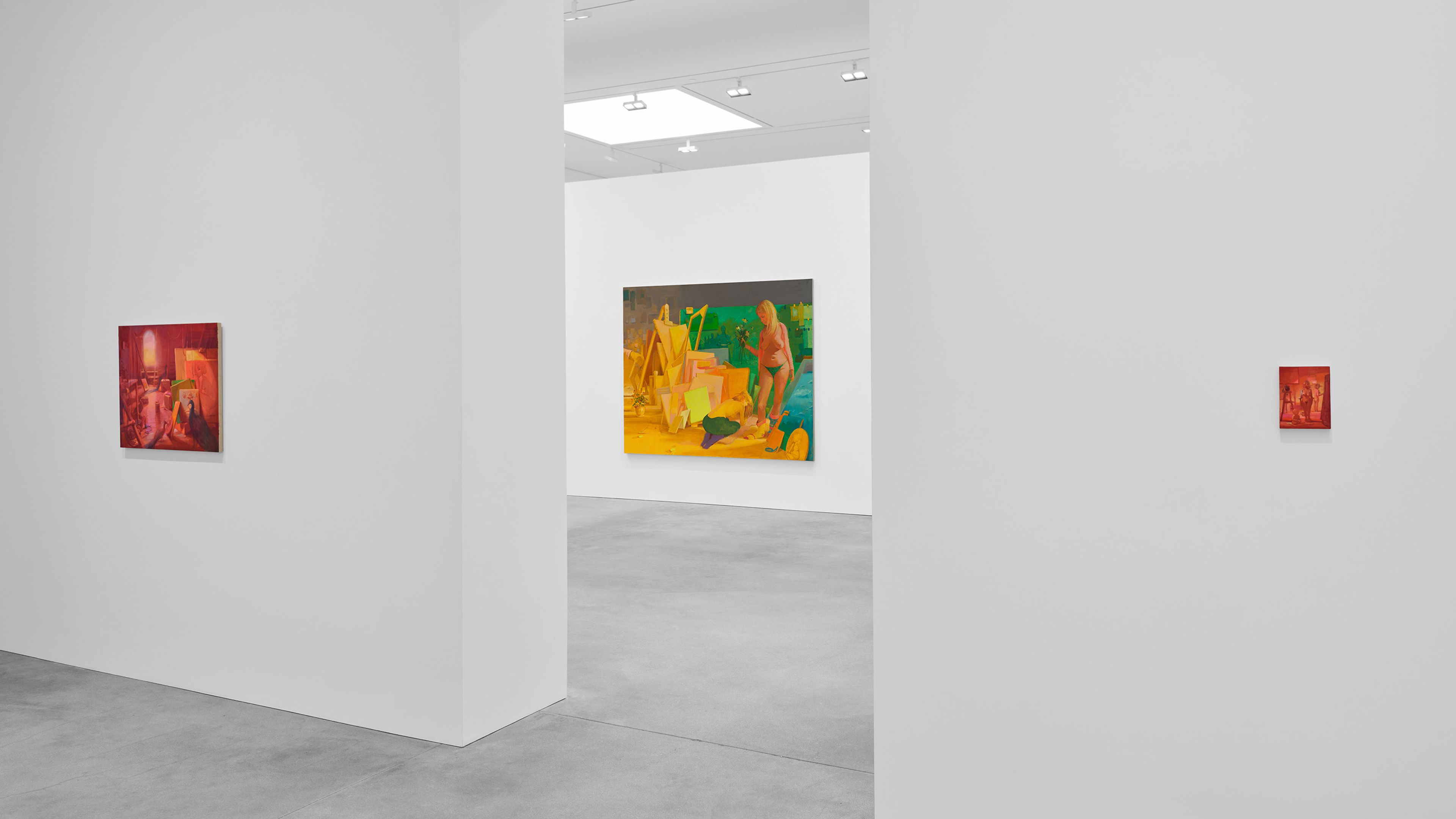
Installation view, Lisa Yuskavage, David Zwirner, Los Angeles, 2025
“When she started out, figurative painting was out of fashion. Today, it is contemporary art’s most popular genre — and Yuskavage is on top of the art world.”
—Julia Halperin in the Financial Times
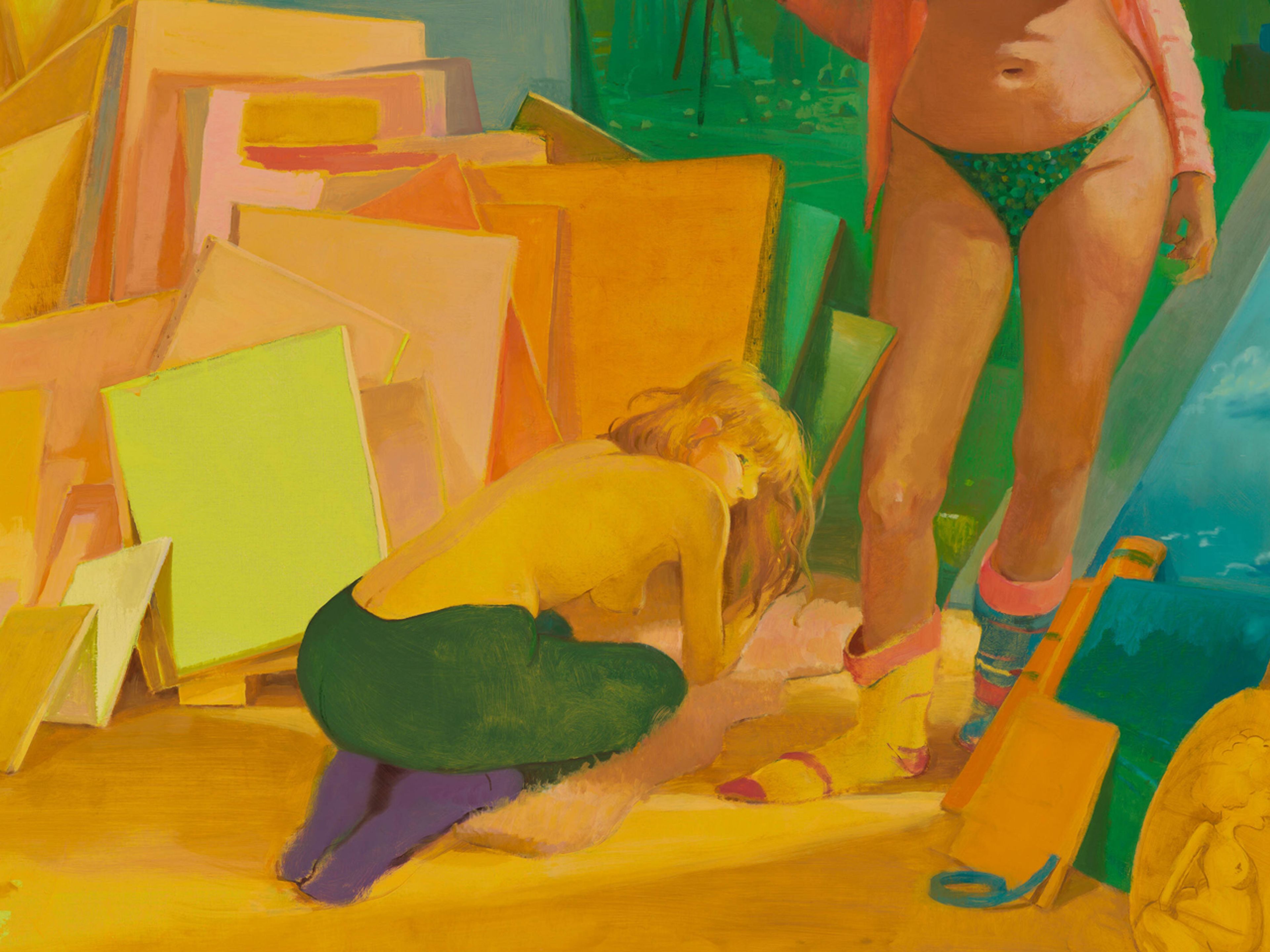
Lisa Yuskavage, Morning Classes in New Haven: In the Department of Color Theory, 2024 (detail)

Lisa Yuskavage, Morning Classes in New Haven: In the Department of Color Theory, 2024 (detail)

Lisa Yuskavage, Nel’zah’s, 2012 (detail)

Lisa Yuskavage, Bonfire, 2013–2015. The Metropolitan Museum of Art, New York
The canvas as a visual and narrative device is foregrounded in Morning Classes in New Haven: In the Department of Color Theory (2024), where a cascade of these empty canvases—rendered in cadmiums of all sorts: yellows, golds, tangerines, and salmon pinks—proliferate next to two figures: a crouching model in front of an older model who is standing.
Paradoxically, the cadmium-yellow light monochrome square at the front of the group is actually an exposed section of the overall underpainting. Behind the posing models is a large work in progress in jewellike green tones that seems to visually quote from several of the artist’s works from the early 2010s, which show groups of disapproving peasants, or “Nel’zahs.”
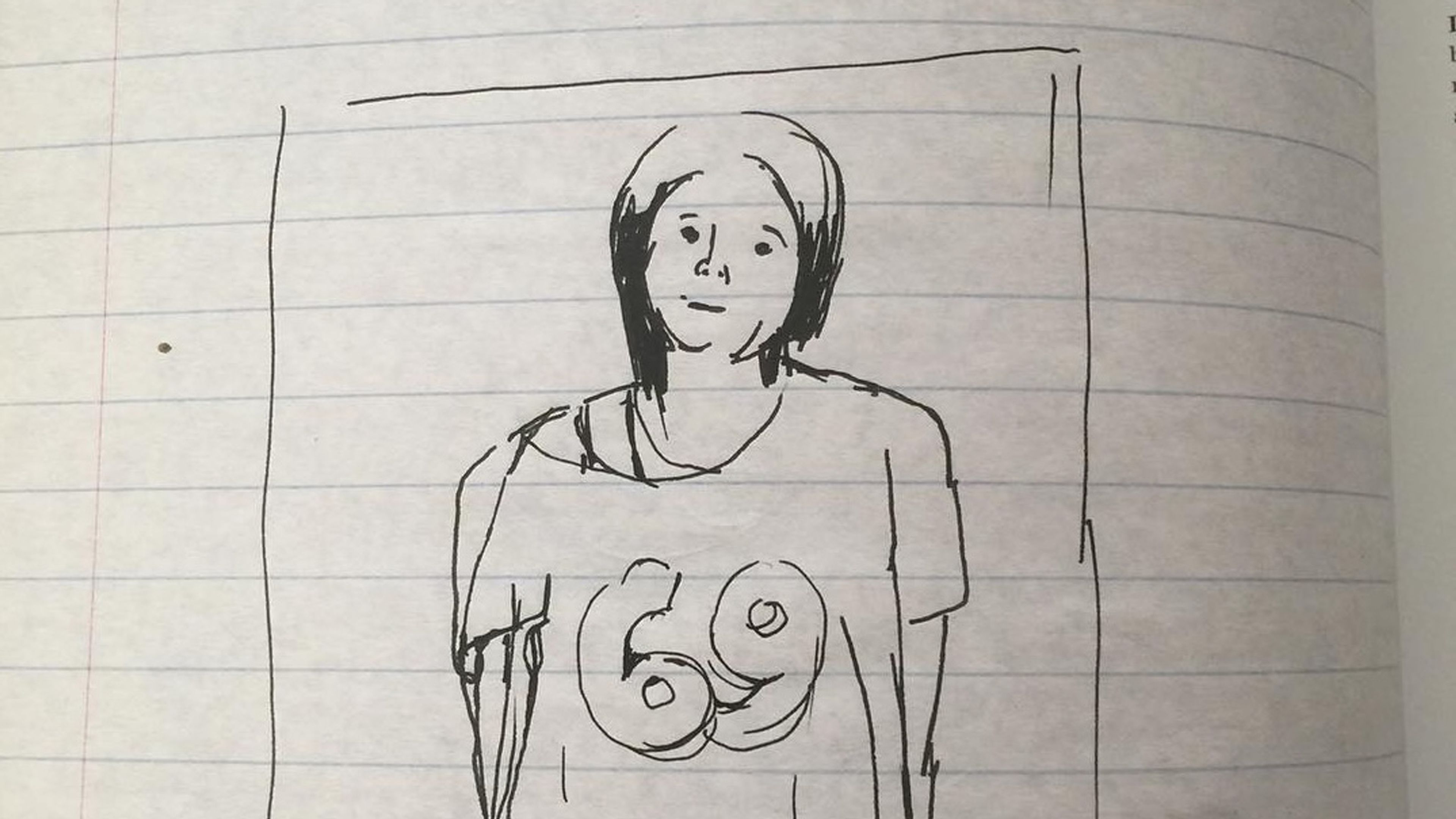
A sheet from Yuskavage’s notebook, 1989 (detail). Courtesy the artist
“In these cases Lisa is trying out an idea in all its variations before launching into a large-scale production. Seeing all these explorations of the same image is like being given a chance to sit in on the painting equivalent of a rehearsal.... Working small allows her the opportunity to stay close to the image while painting.”
—Tamara Jenkins, writer and director, in her catalogue essay for Lisa Yuskavage: Small Paintings 1993–2004
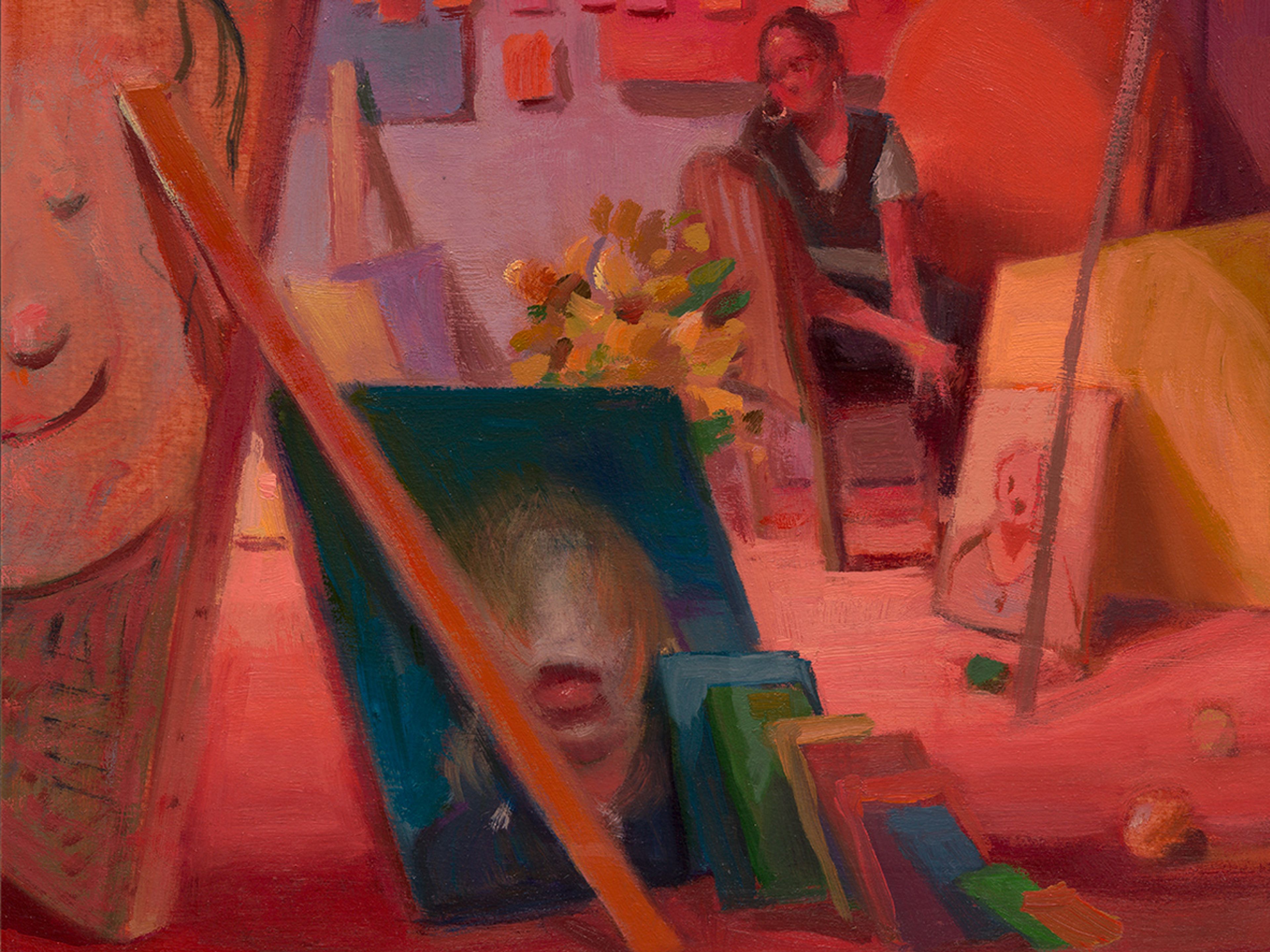
Lisa Yuskavage, Five Nudes a Painter and a Pieface, 2024 (detail)

Lisa Yuskavage, Chrissy, 2008 (detail)

Lisa Yuskavage, Bailey’s Figure Painting Class, 2022 (detail)
Notable among these new small-format works are two rare multipanel paintings. In the diptych Five Nudes a Painter and a Pieface (2024), we again see the artist’s motif of a female nude in beaded panties, as well as a reference to “The Motherfucker” in the large painting in the foreground. A small portrait in the right panel quotes from Yuskavage’s Chrissy (2008) and several other works from the 2000s of women who appear to have been hit in their faces with pies, while the woman seated on the chair in the background recalls similar figures from a number of earlier works, including, more recently, Bailey’s Figure Painting Class (2022).
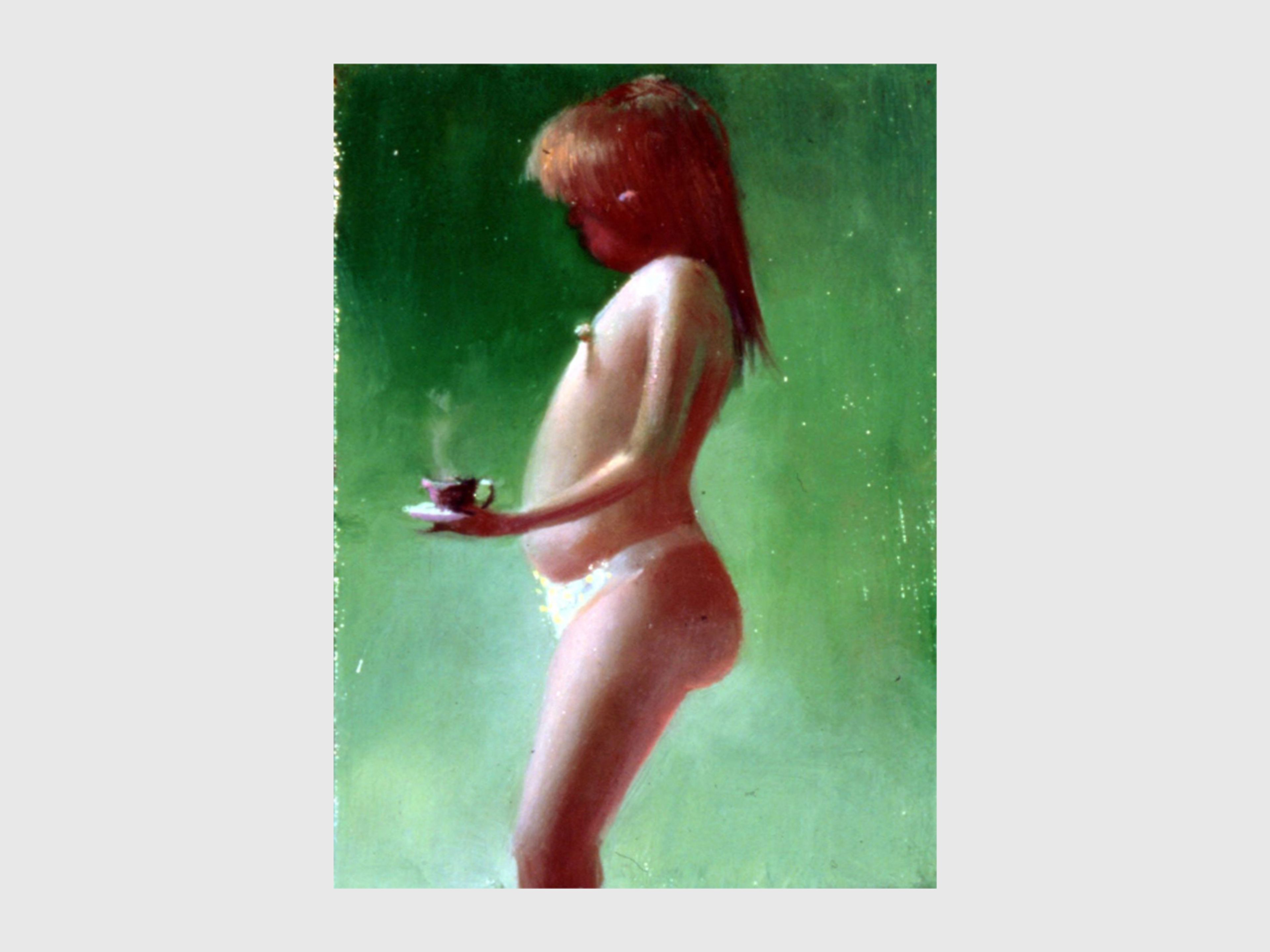
Lisa Yuskavage, The Good, 1995

Lisa Yuskavage, Oh, 1995
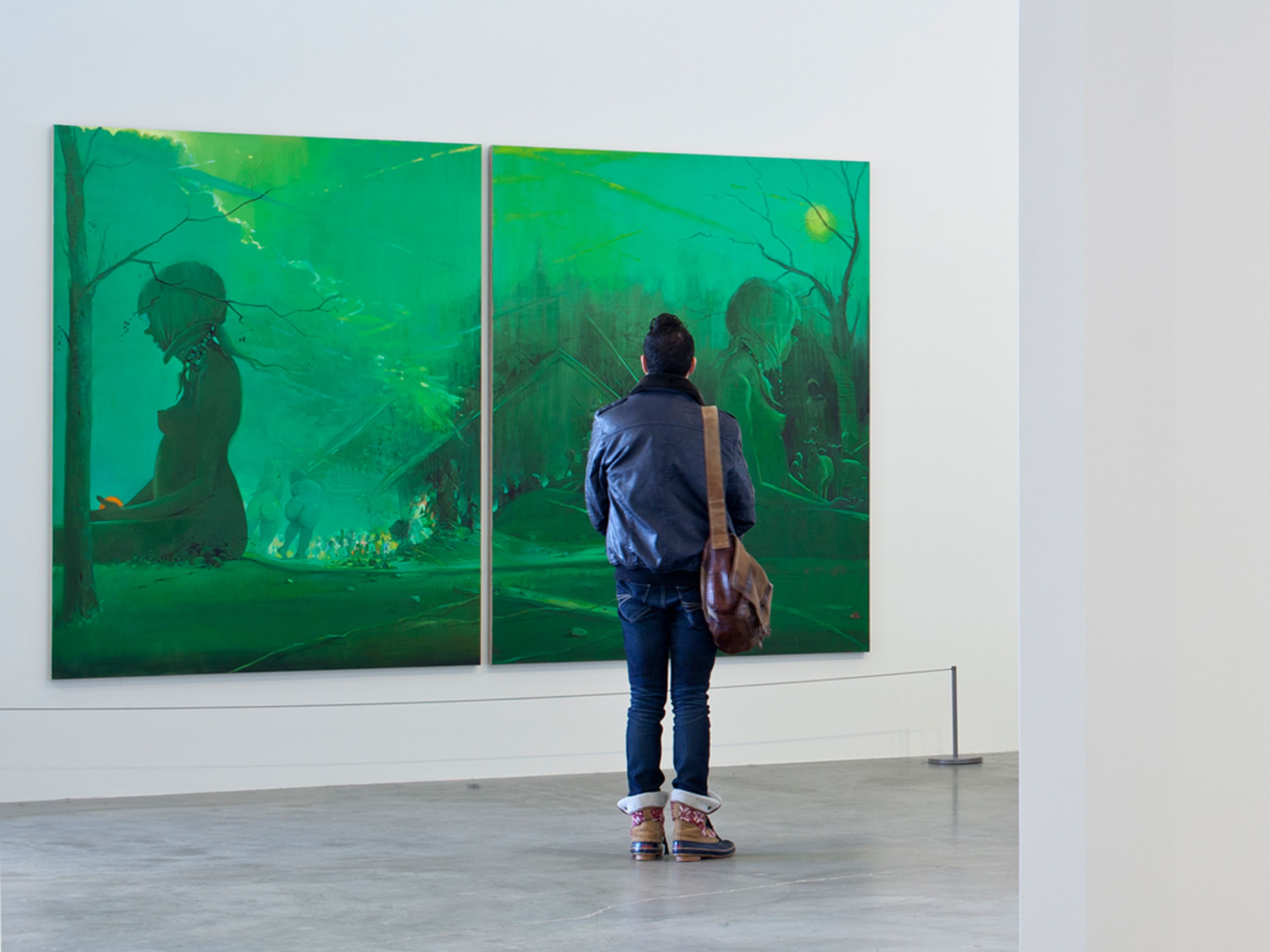
Installation view, Lisa Yuskavage’s Bonfire (2013–2015), on view in Lisa Yuskavage: The Brood, Contemporary Art Museum St. Louis, 2016
Endless Studio (2024) is a rare small-format triptych. The left panel shows a number of the artist’s recurring motifs: a nude model holding a teacup, a view of an imagined work that again makes reference to the “Nel’zah's,” and a peacock—a symbol of immortality in Western art history. In the center, there is a self-portrait of Yuskavage in a lab coat, standing above a small canvas that recalls the subject of her 1995 painting Oh. The bonfire visible in the painting-within-a-painting in the right panel invokes a number of similar works from the 2010s and early 2020s.
“The paintings warp time, folding in and back in themselves spatially, like a wormhole that moves us forward and backward in time.... These paintings offer a complex history made up of personal iconography combined with a bevy of art-historical allusions, meaning that nothing is exactly as it appears. Instead, there is constant vacillation.”
—Helen Molesworth, curator

Installation view, Lisa Yuskavage, David Zwirner, Los Angeles, 2025

Inquire about works by Lisa Yuskavage
